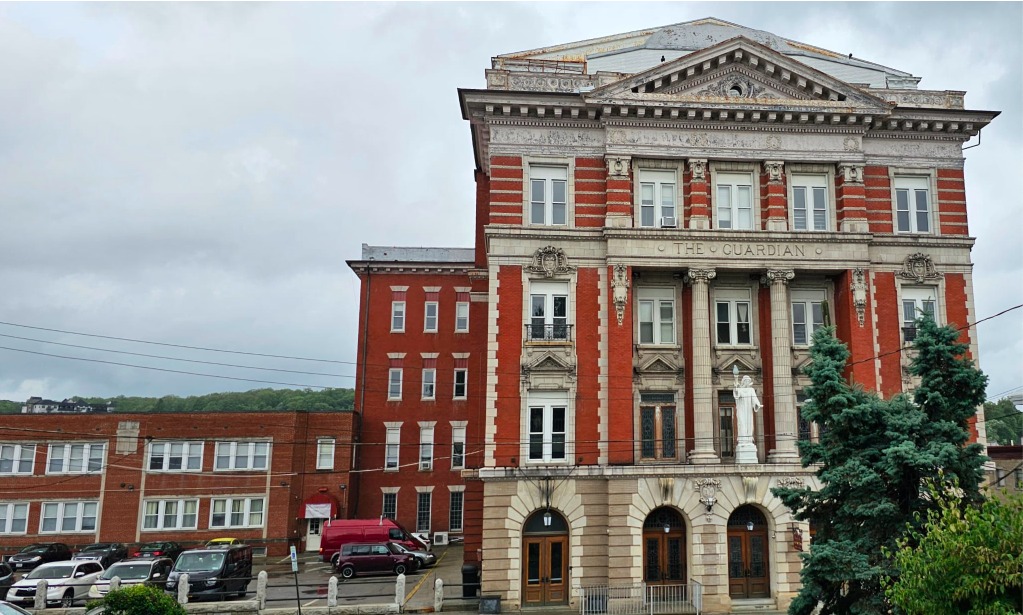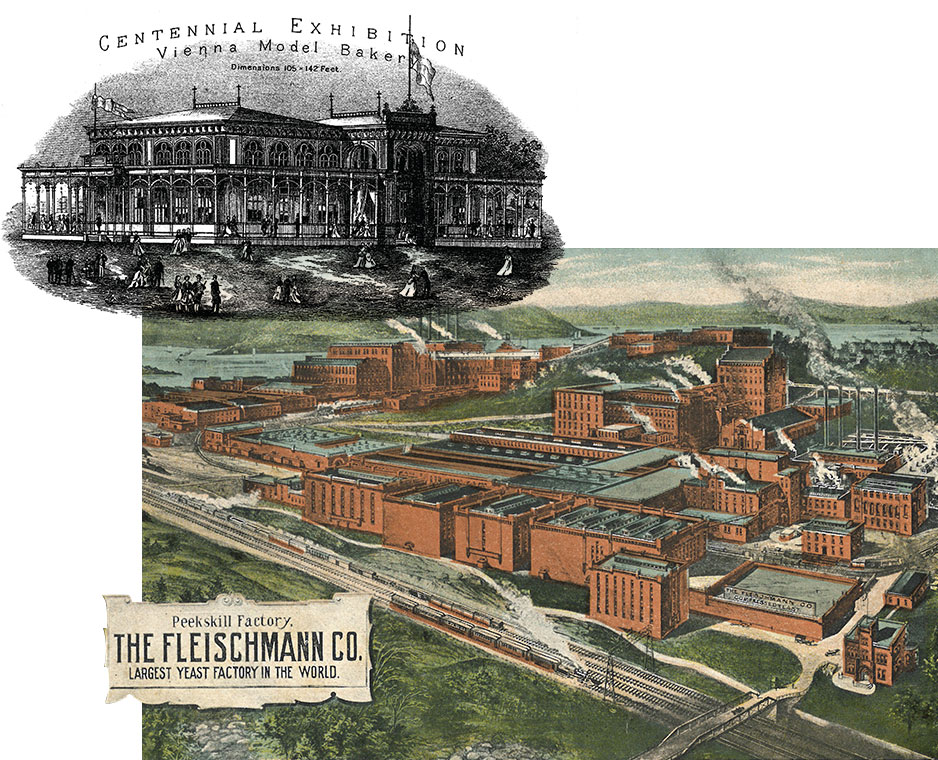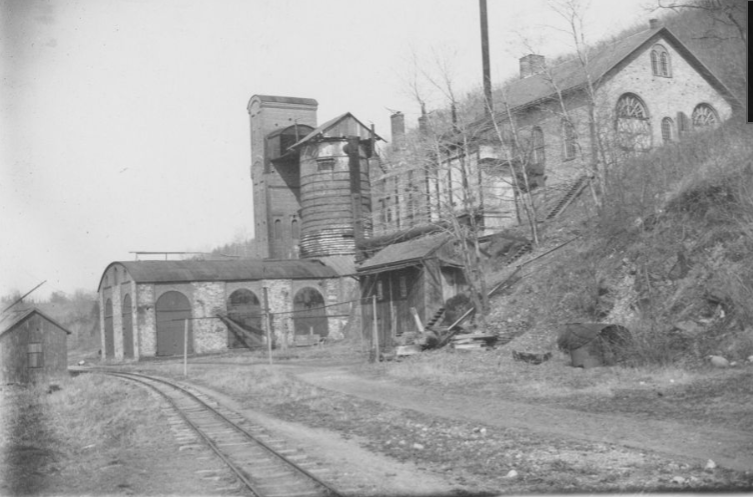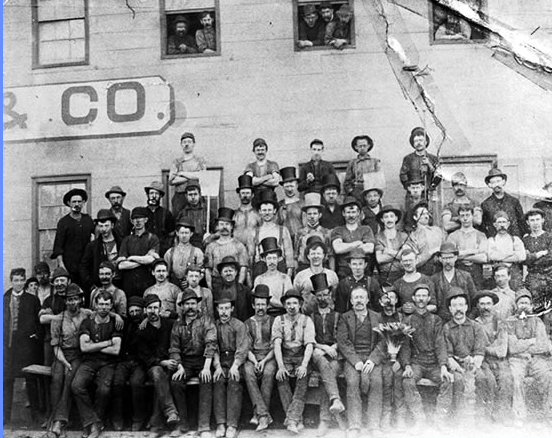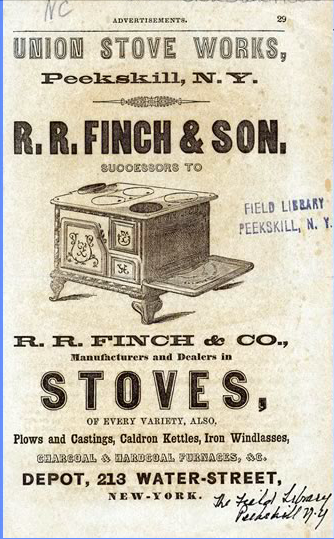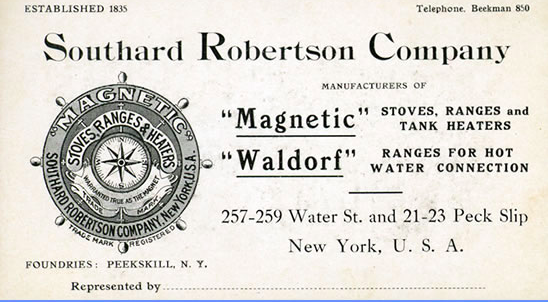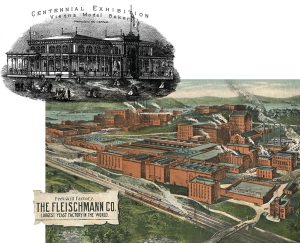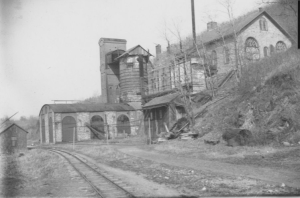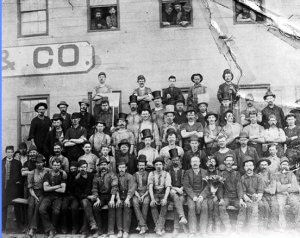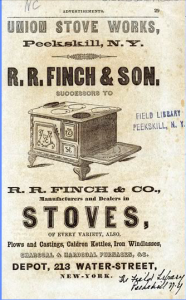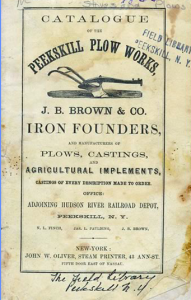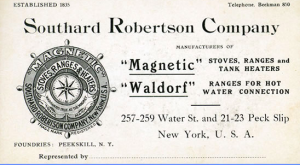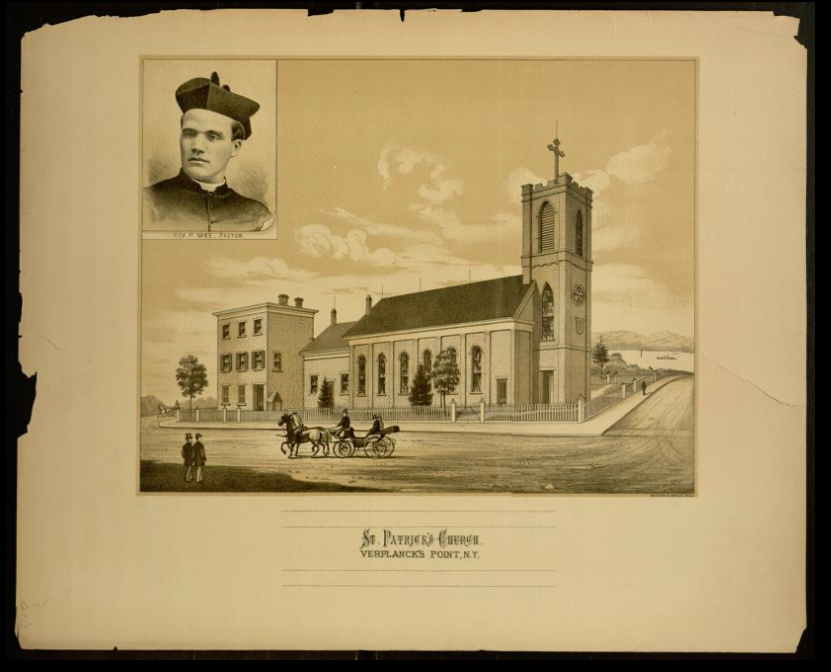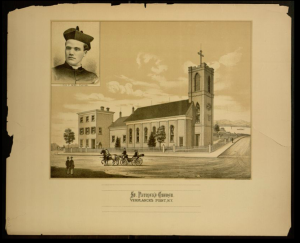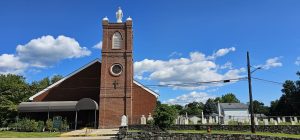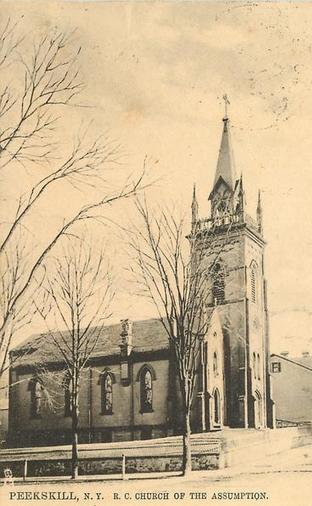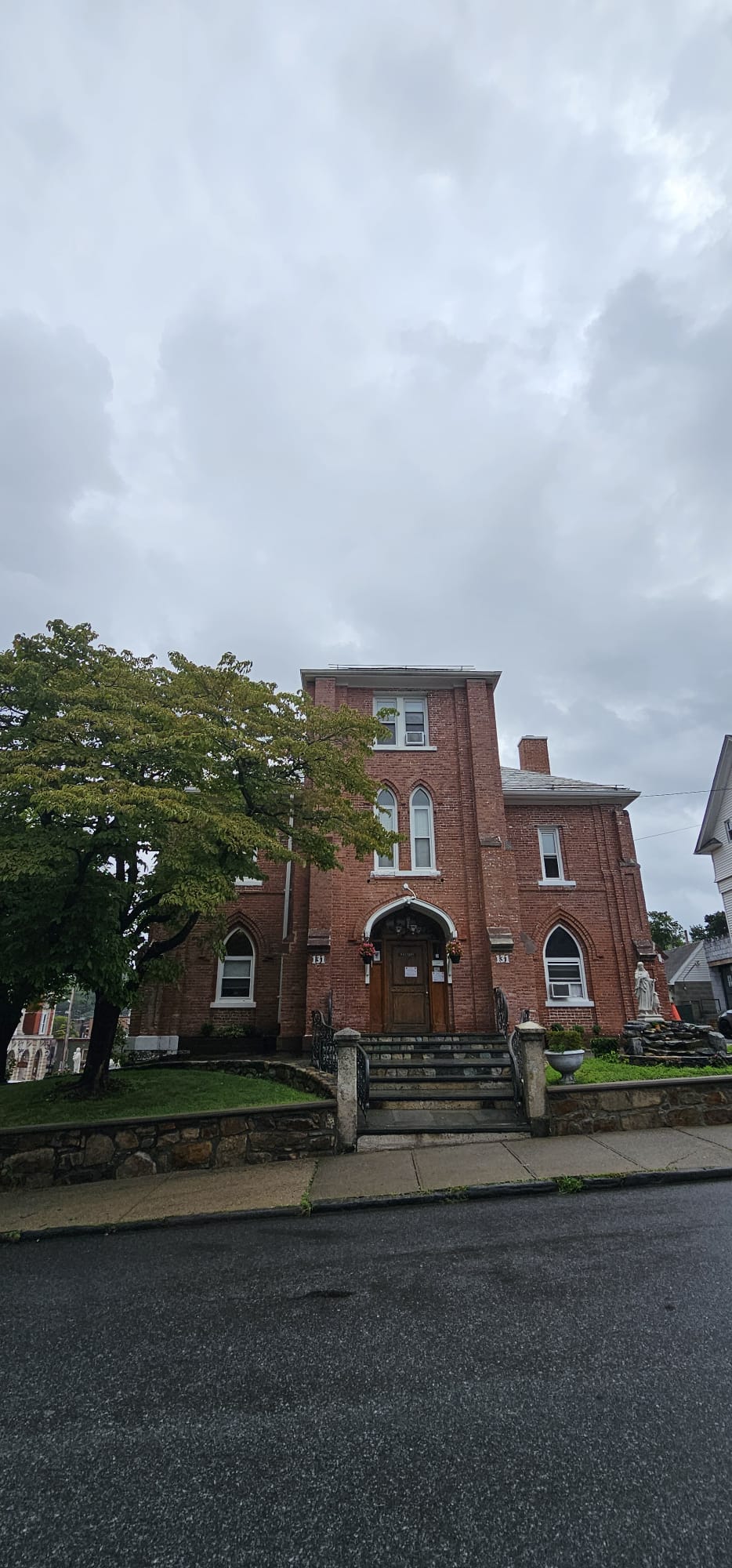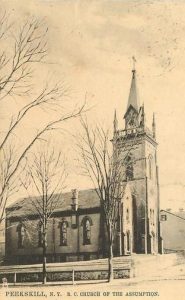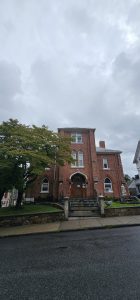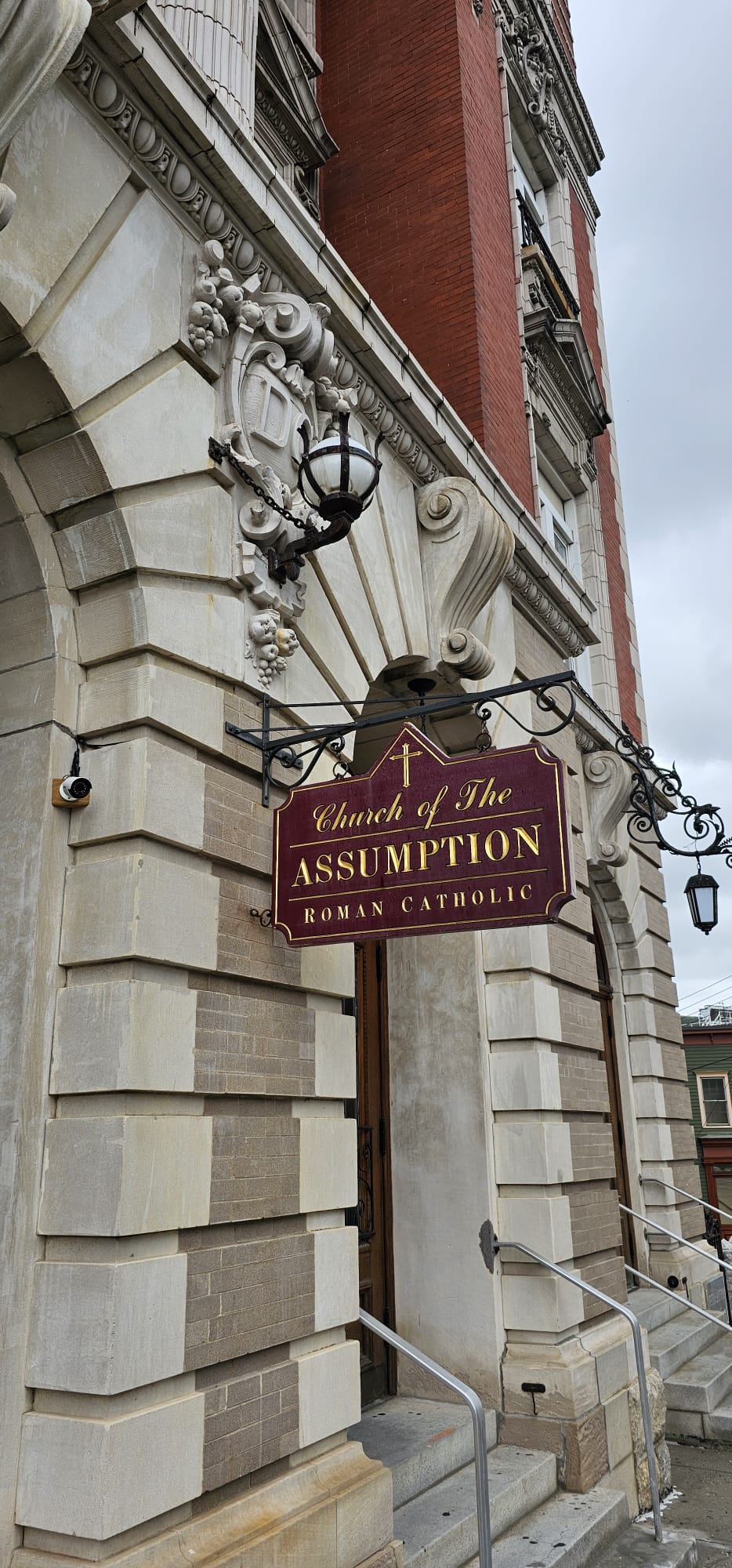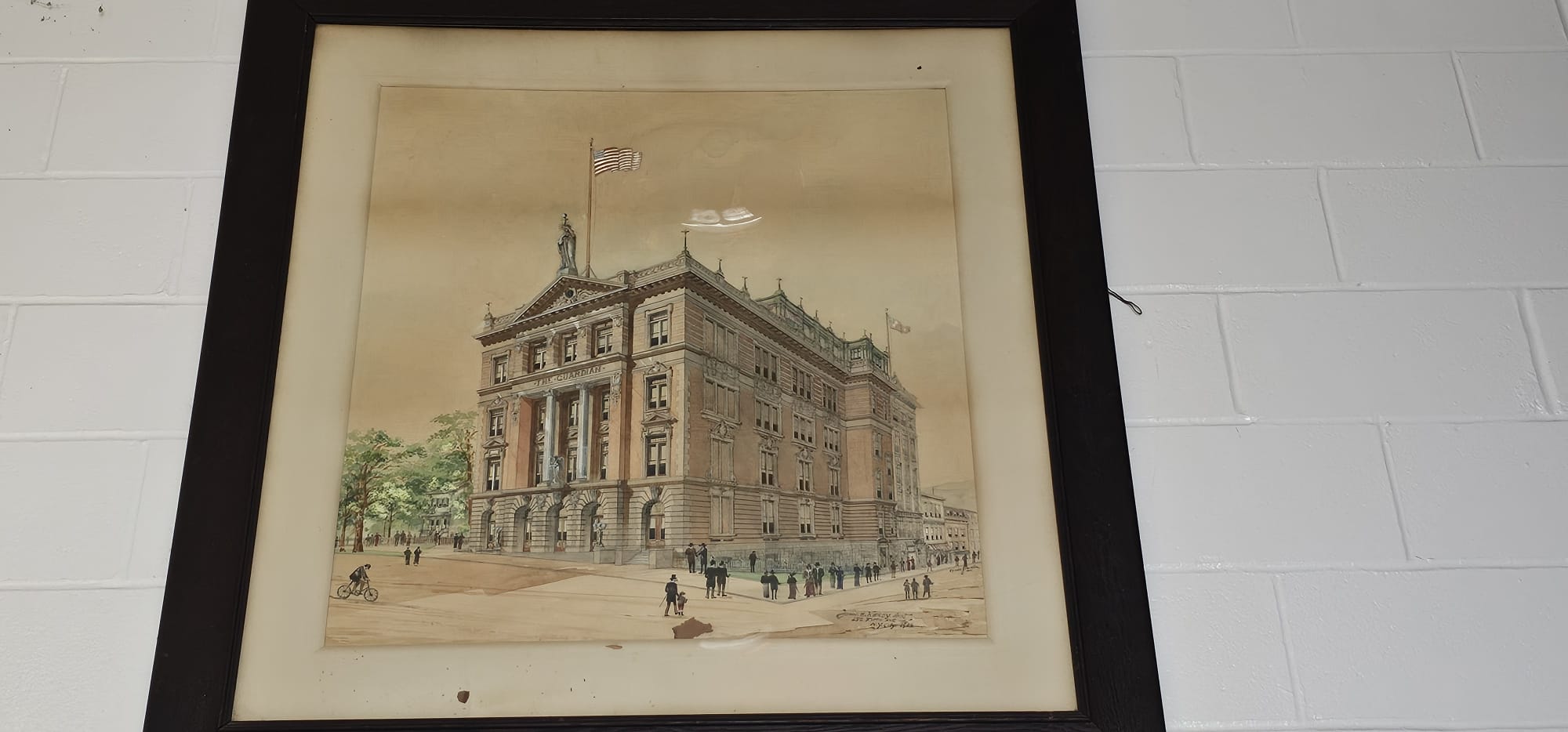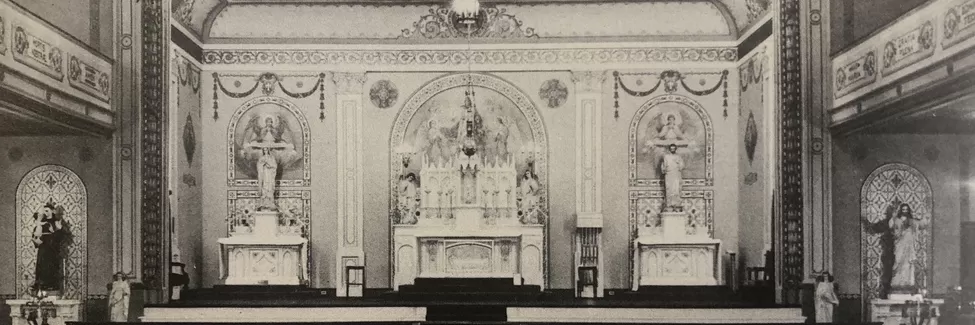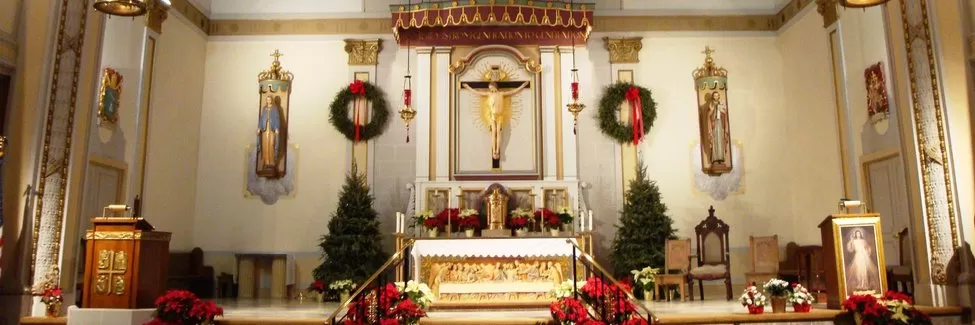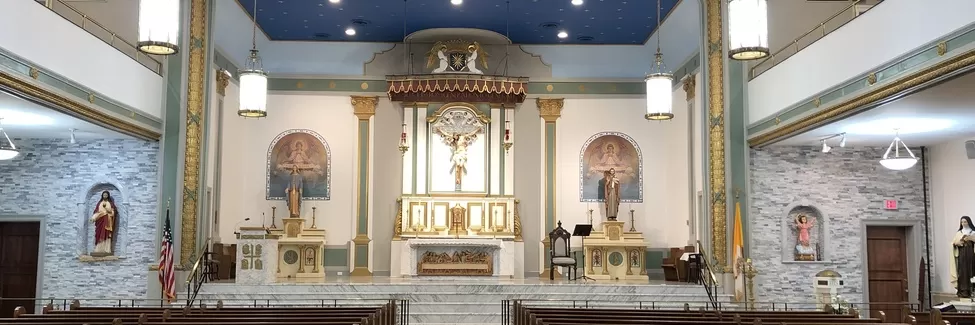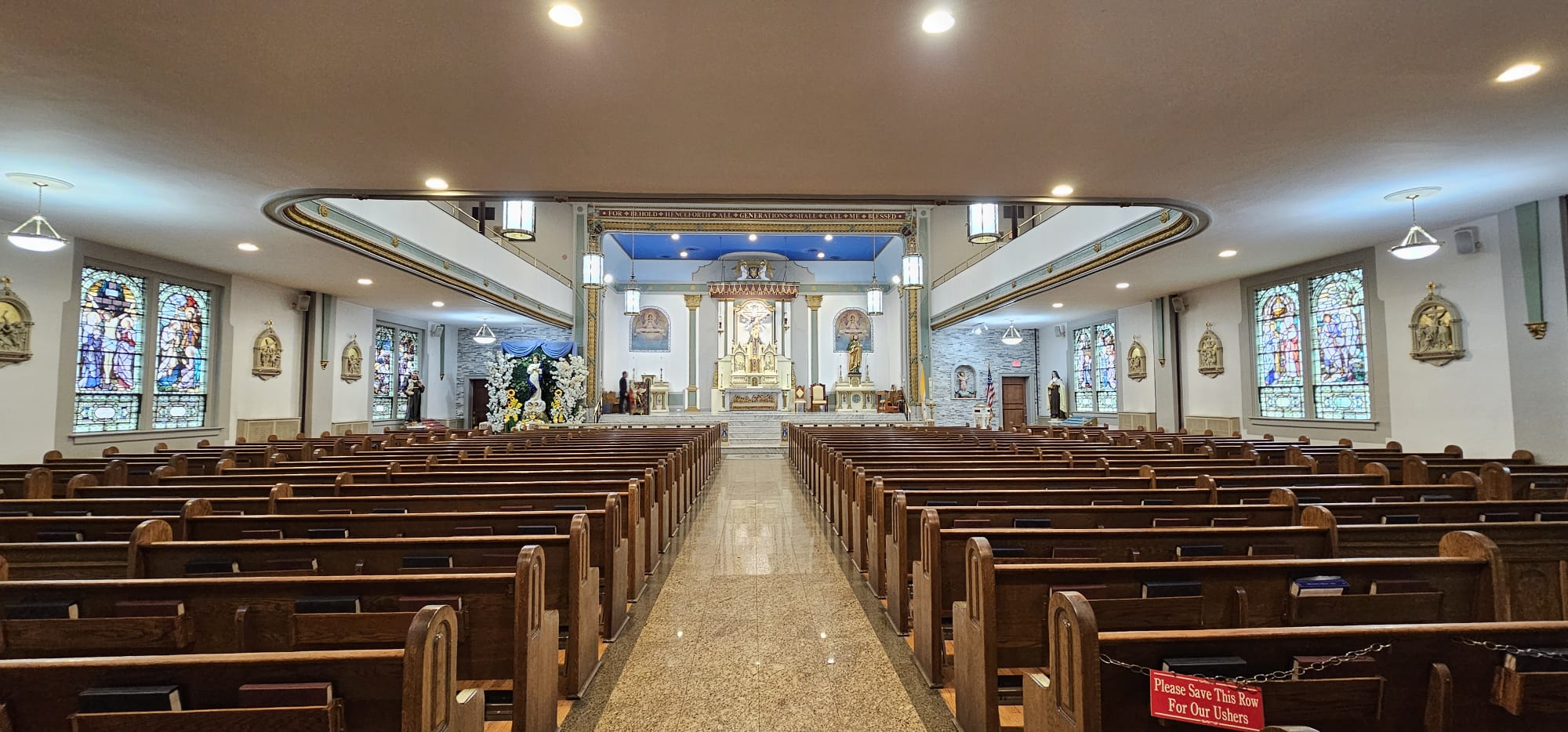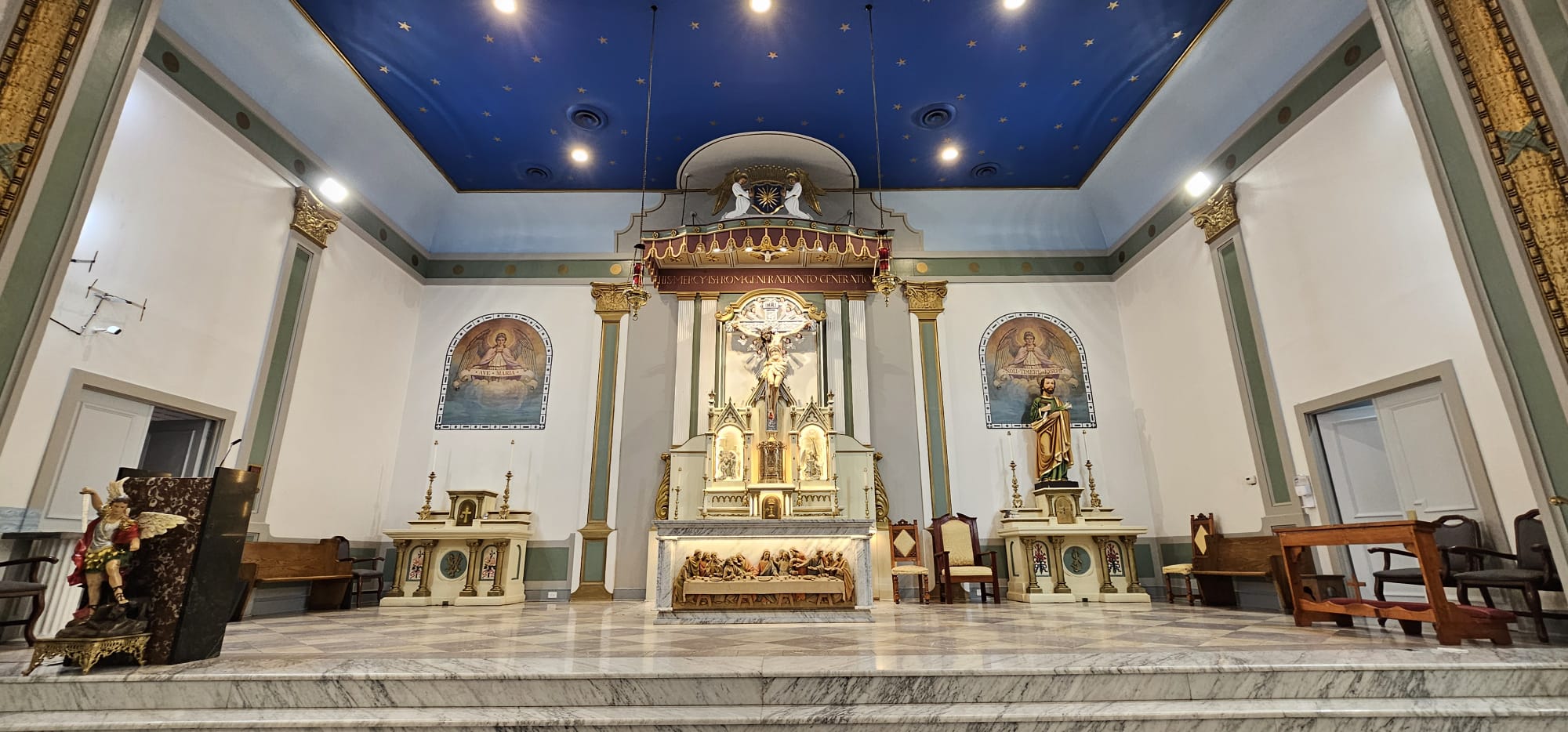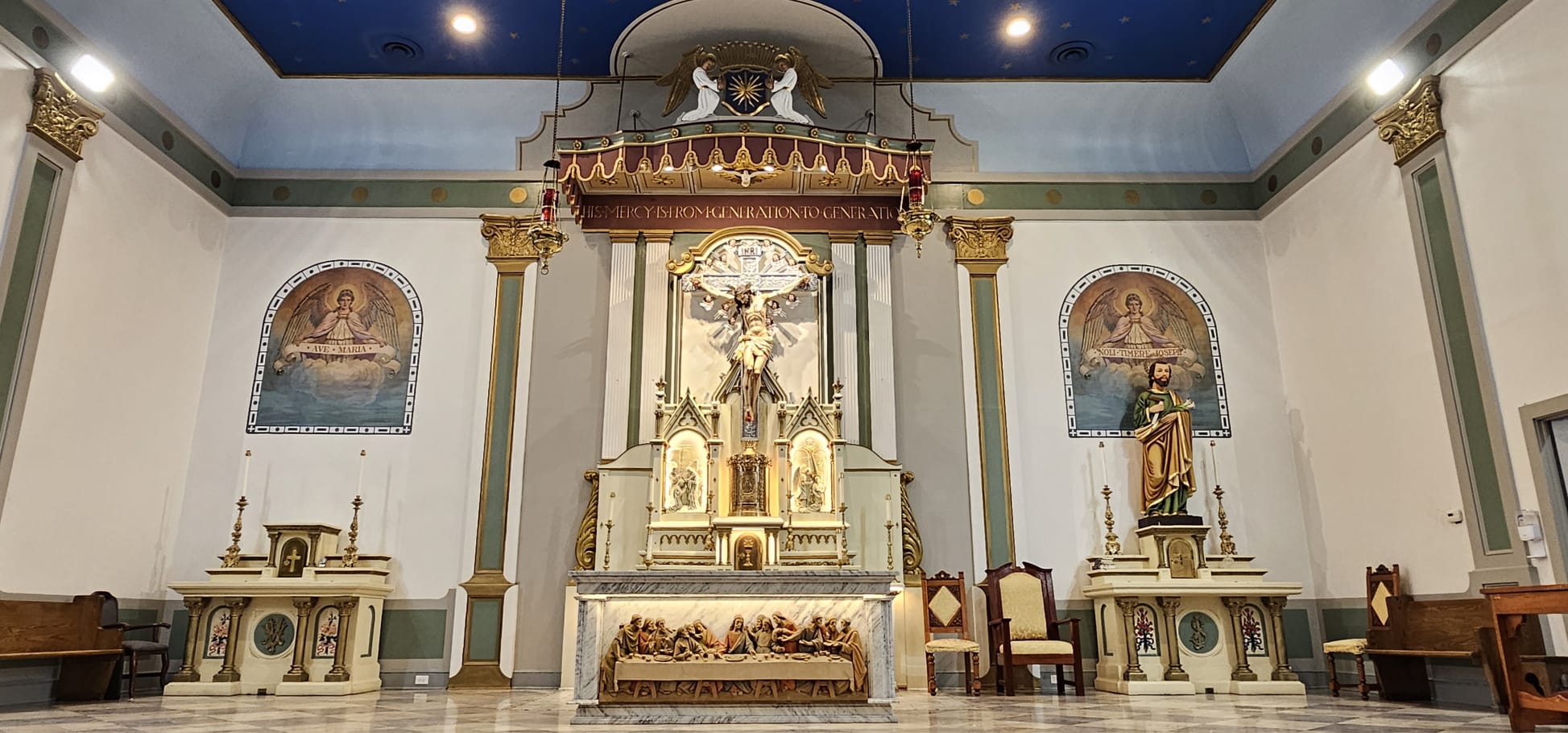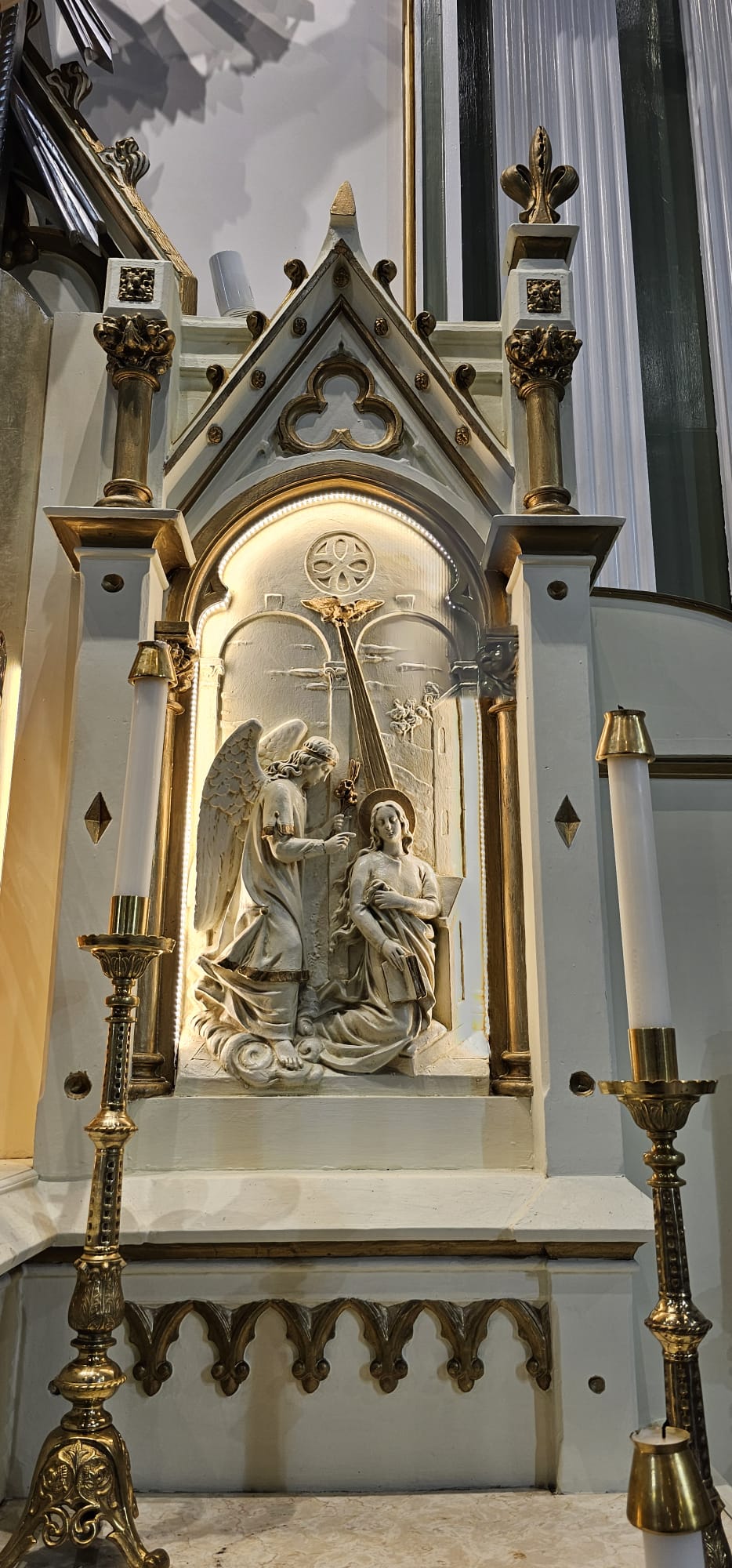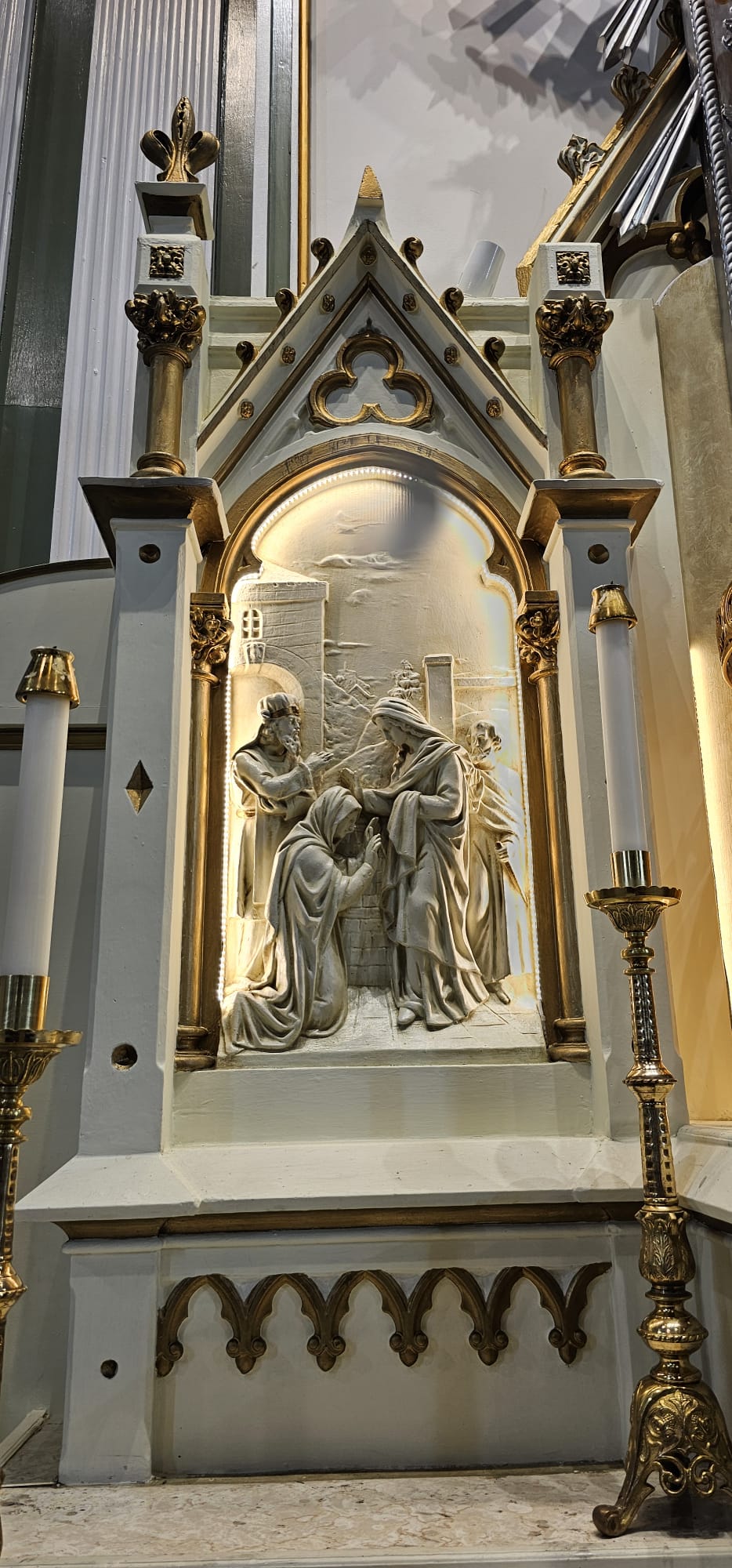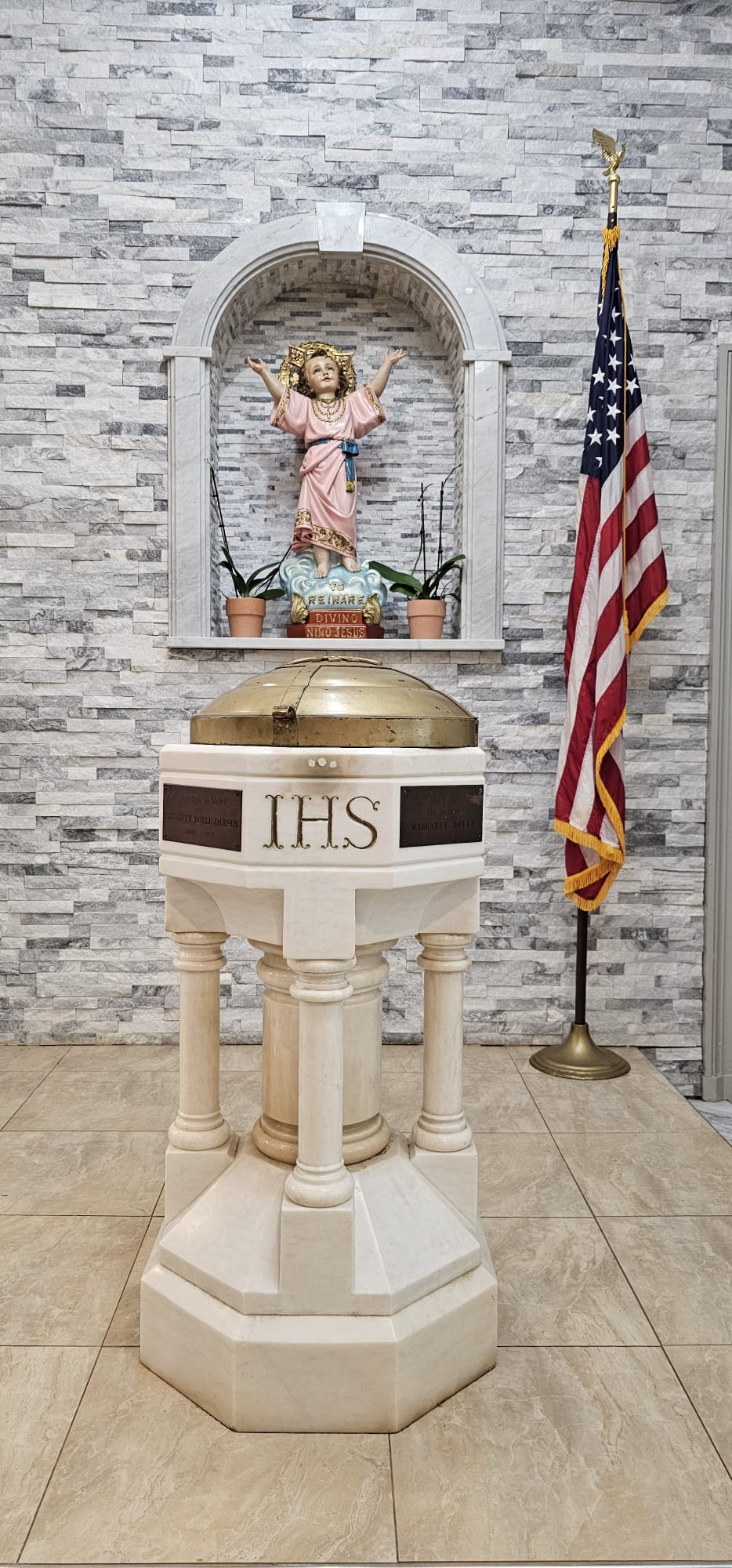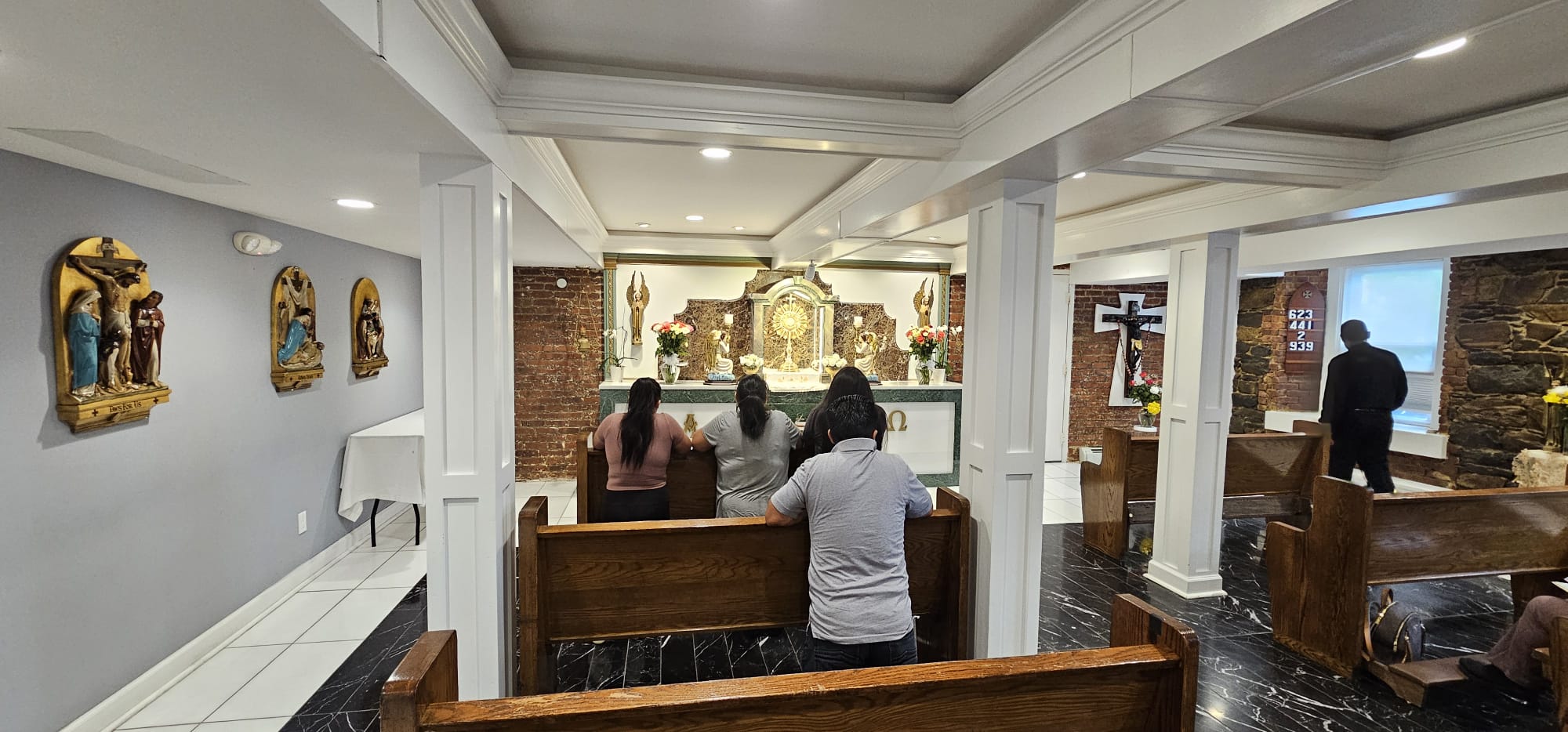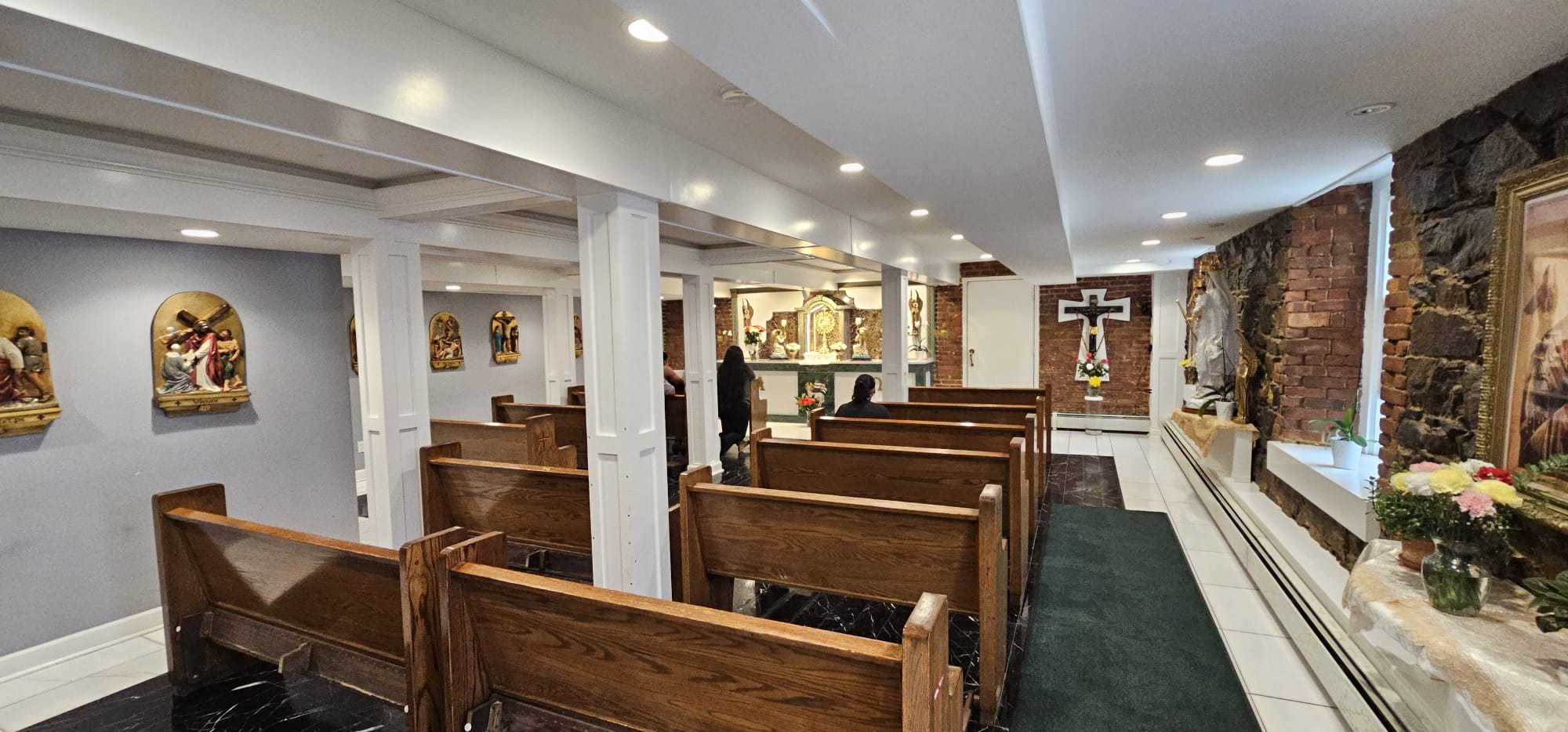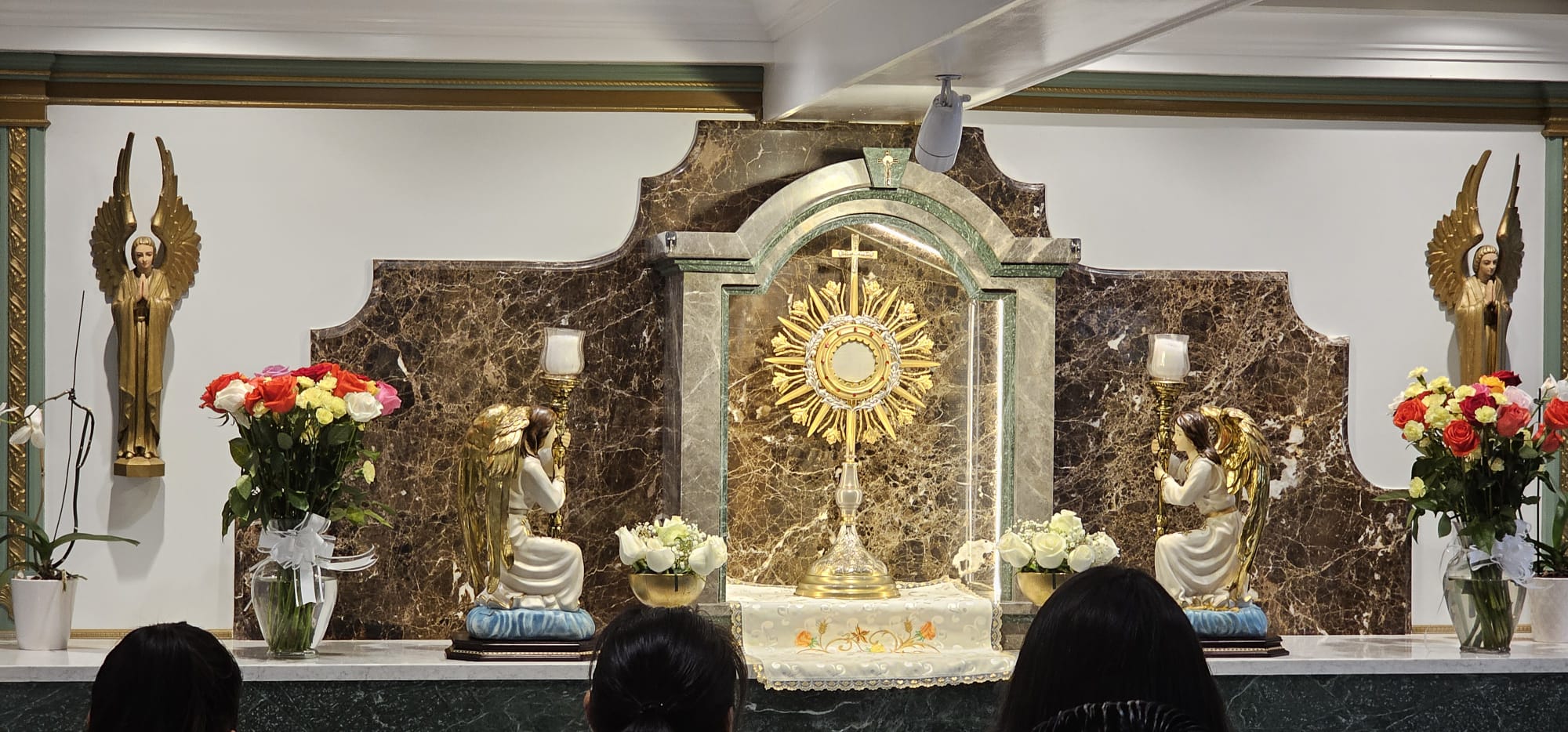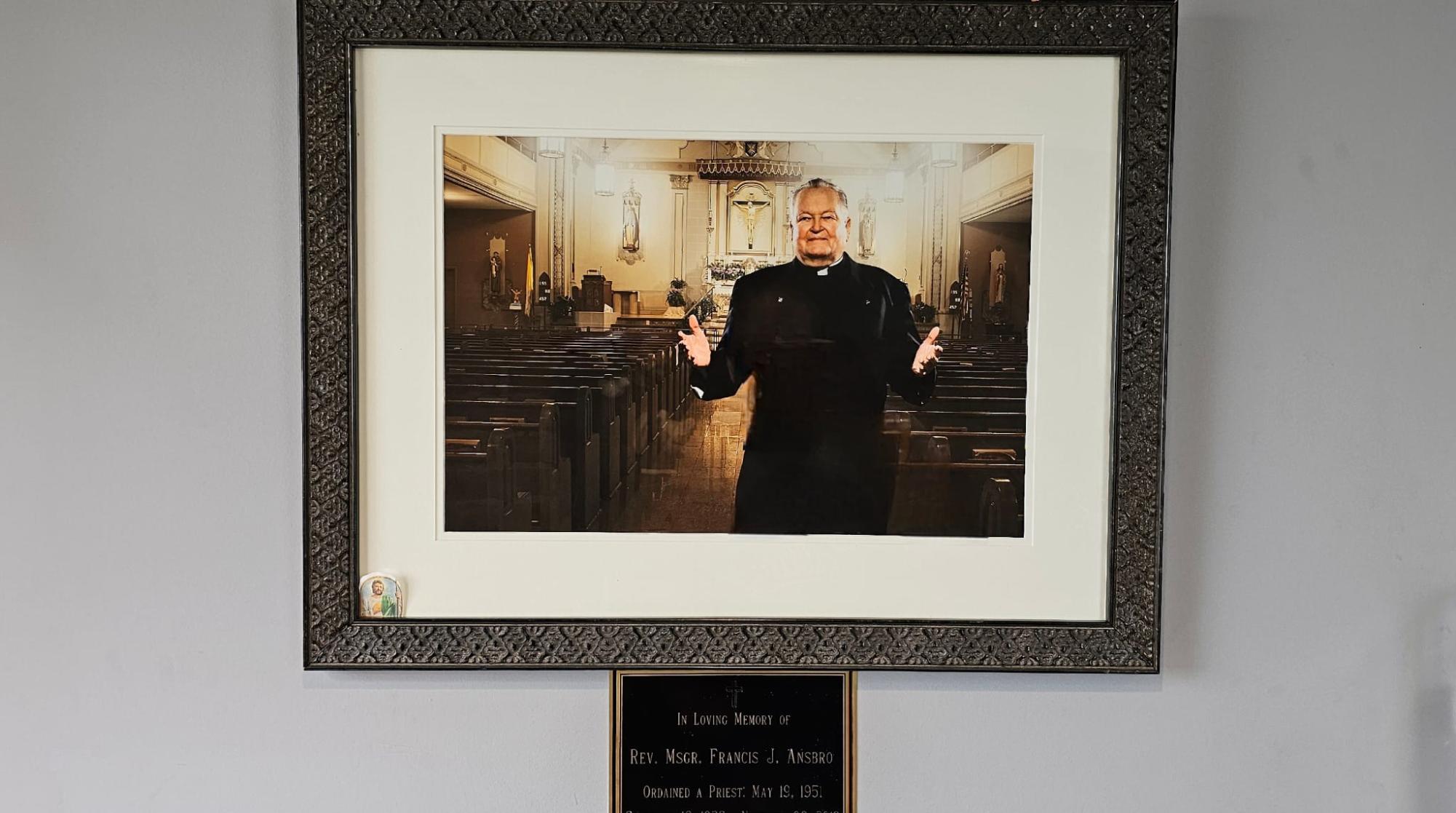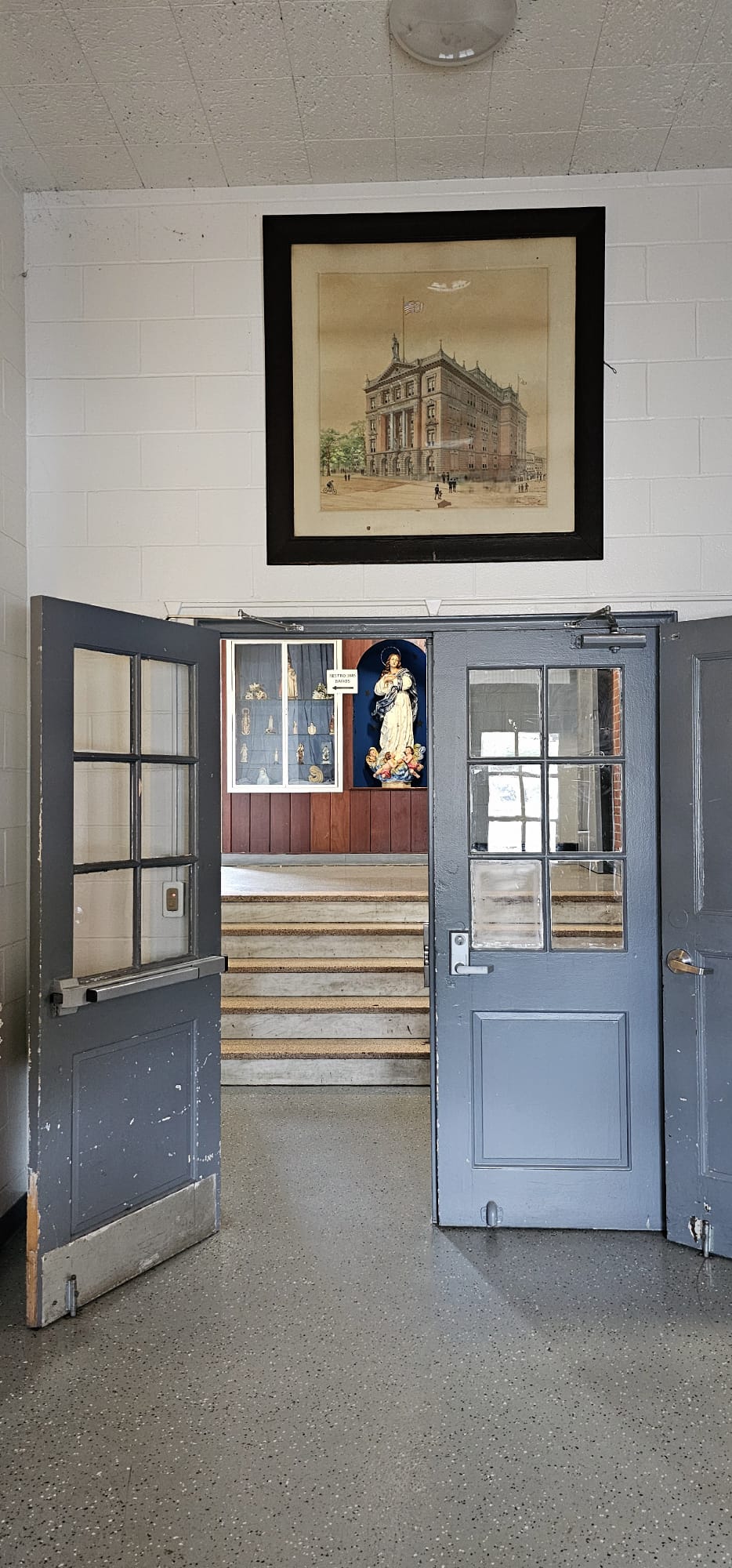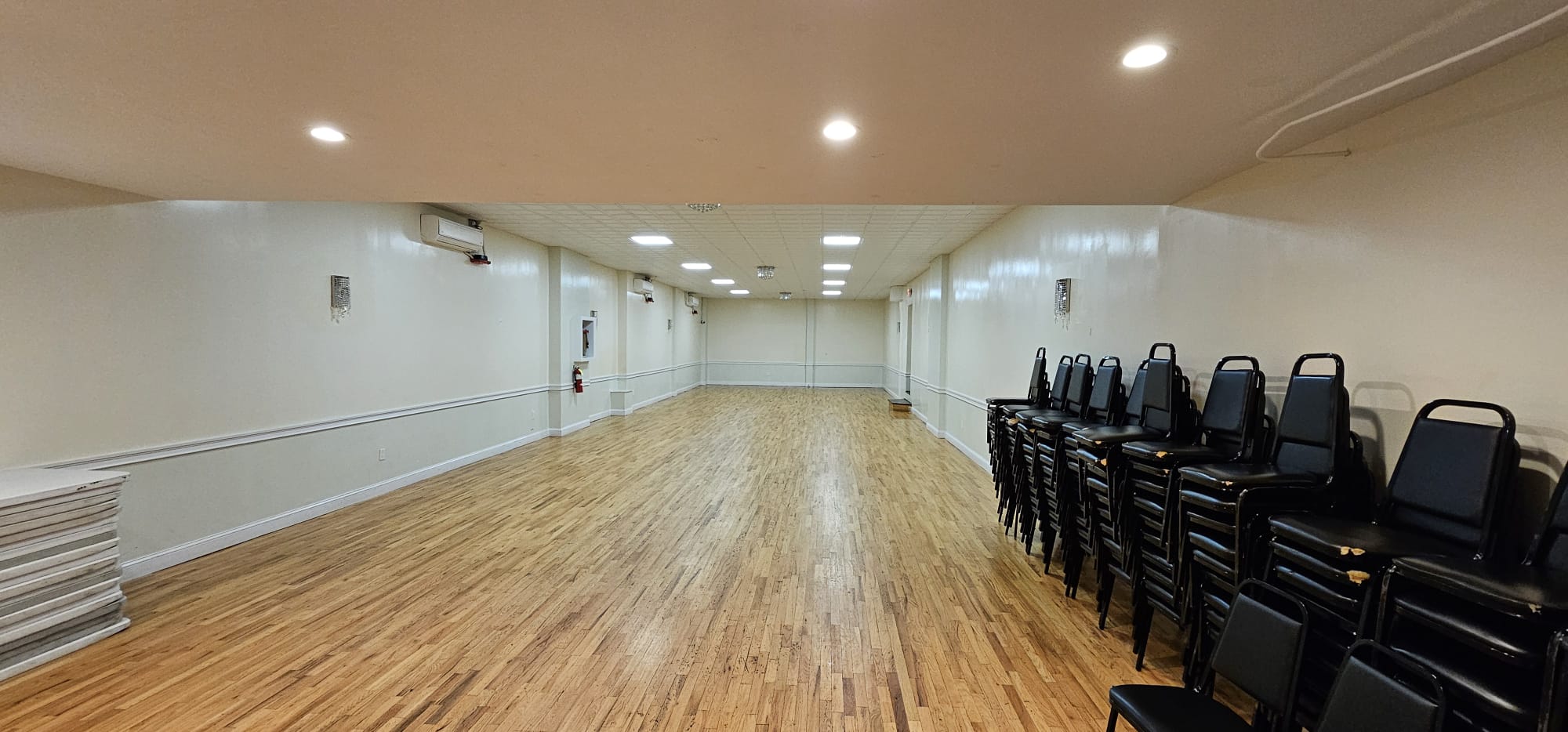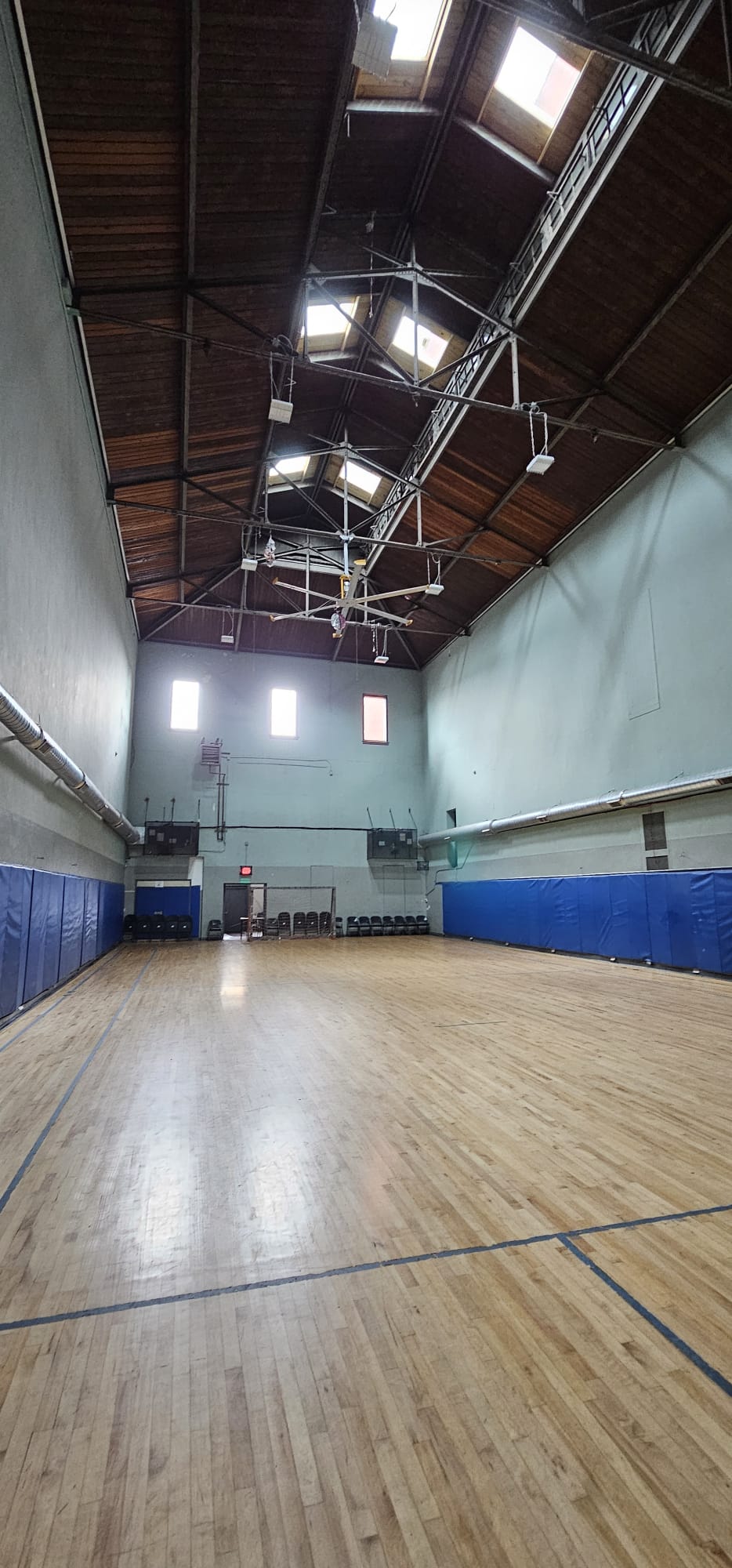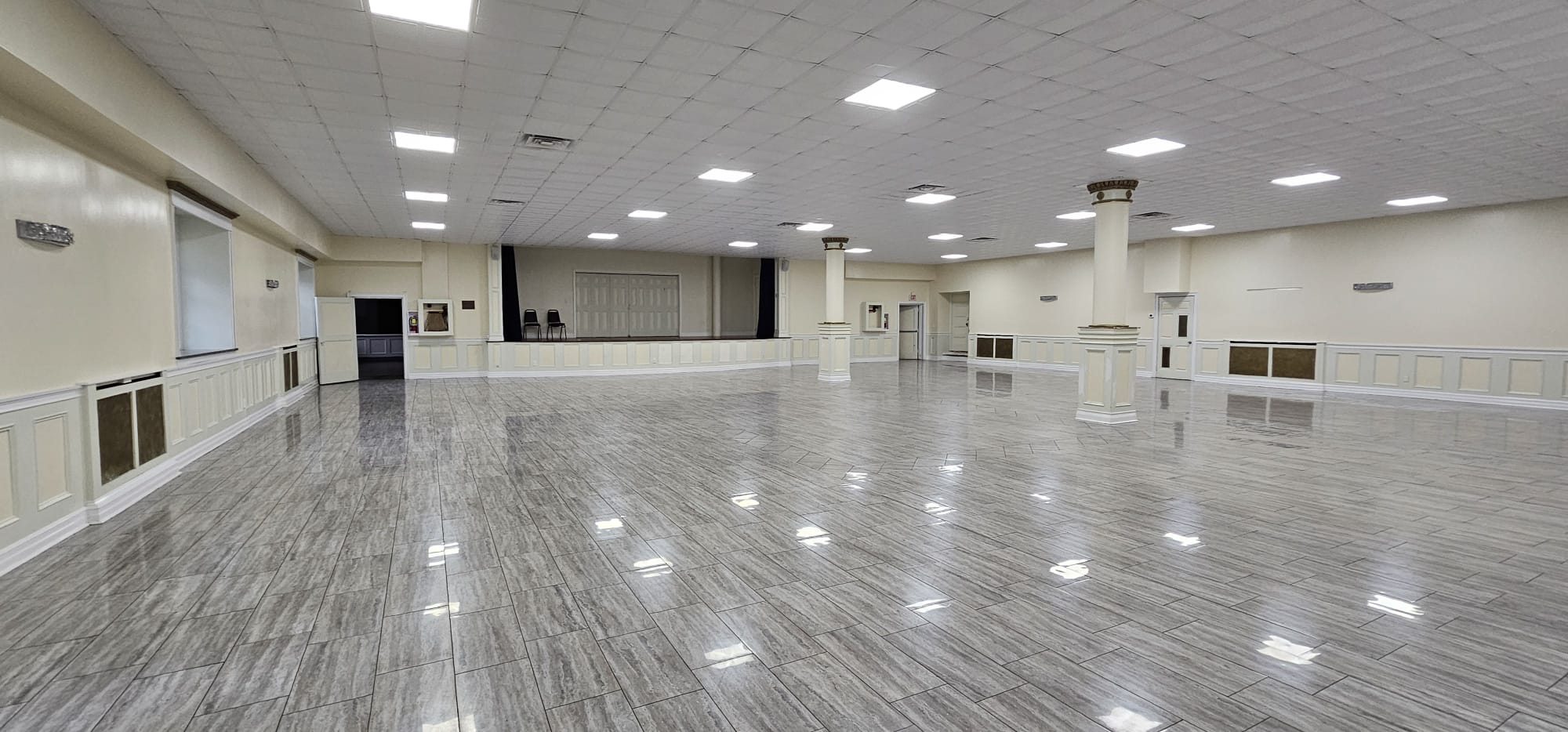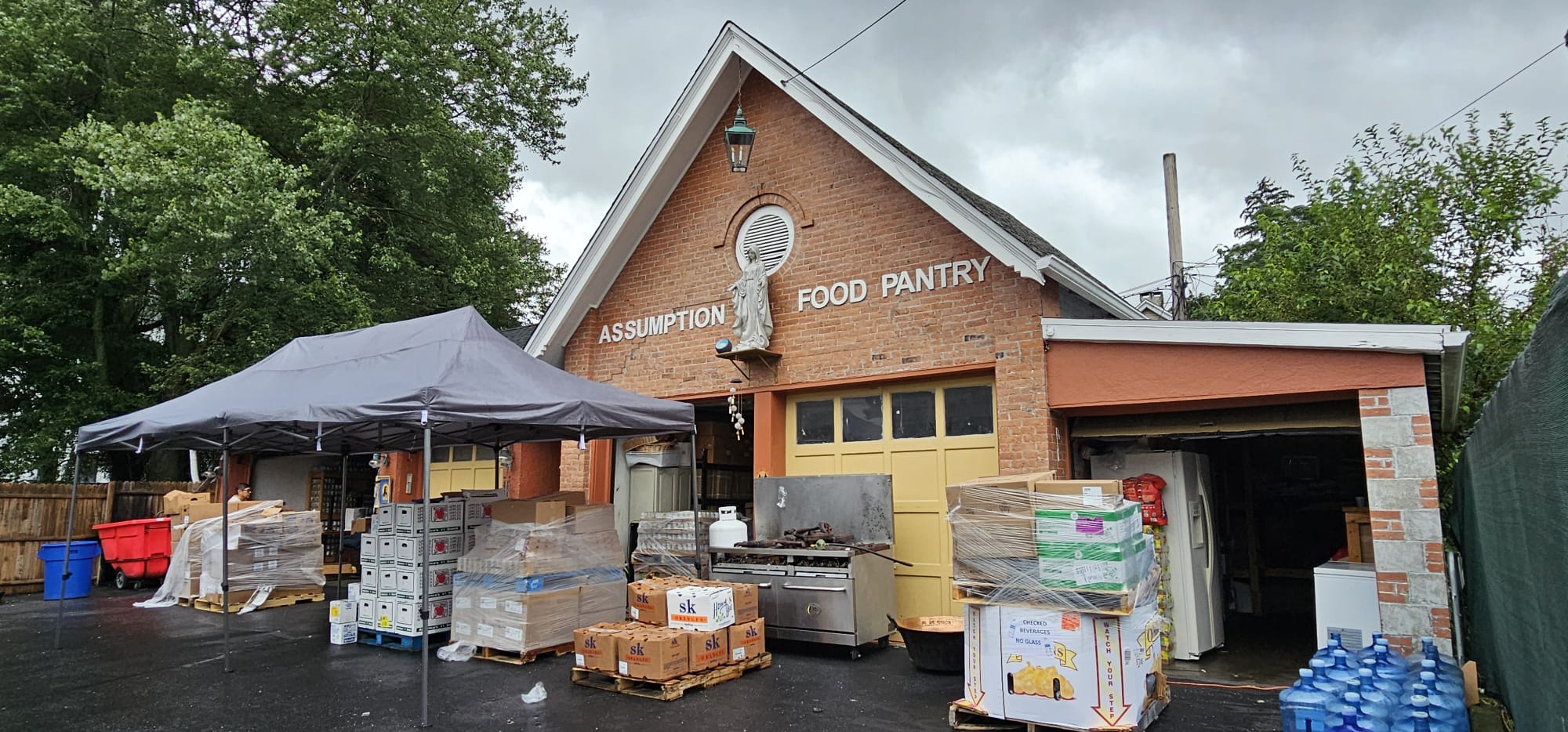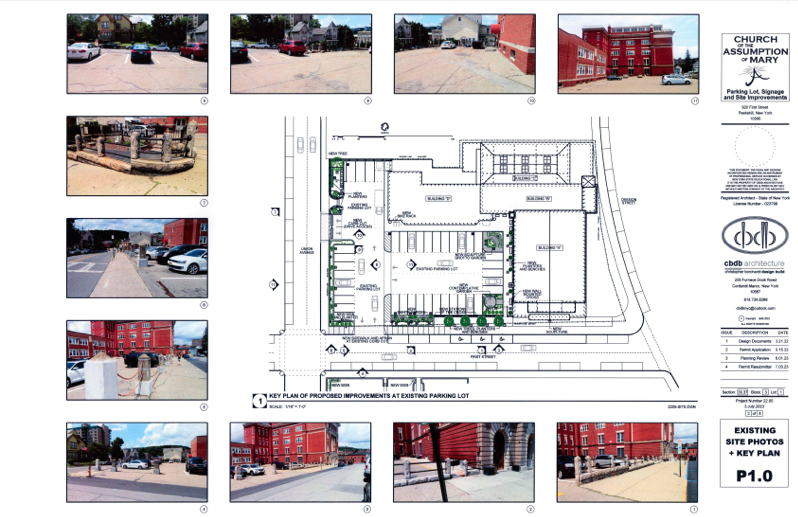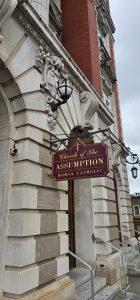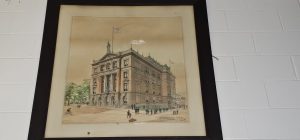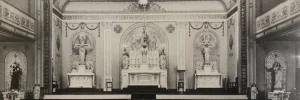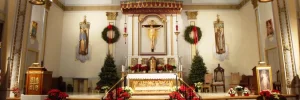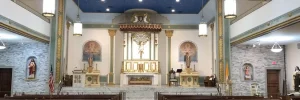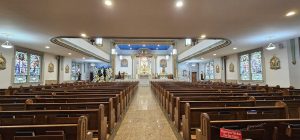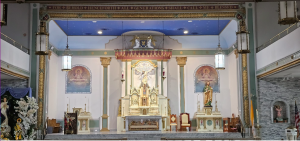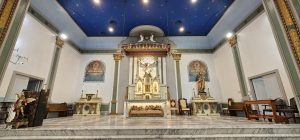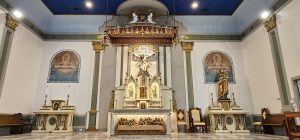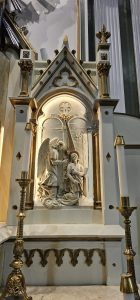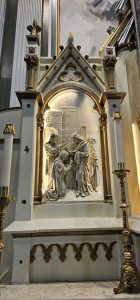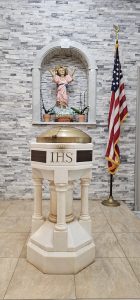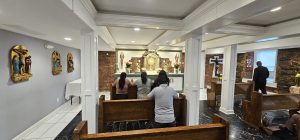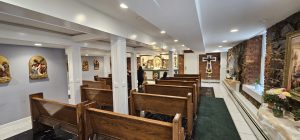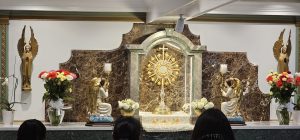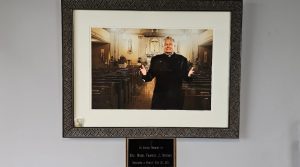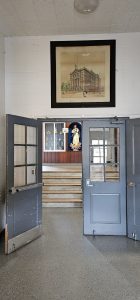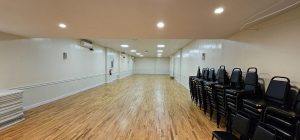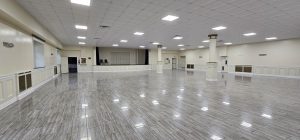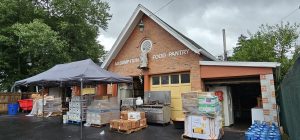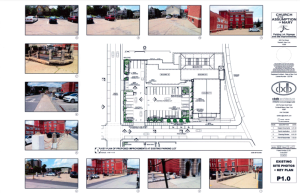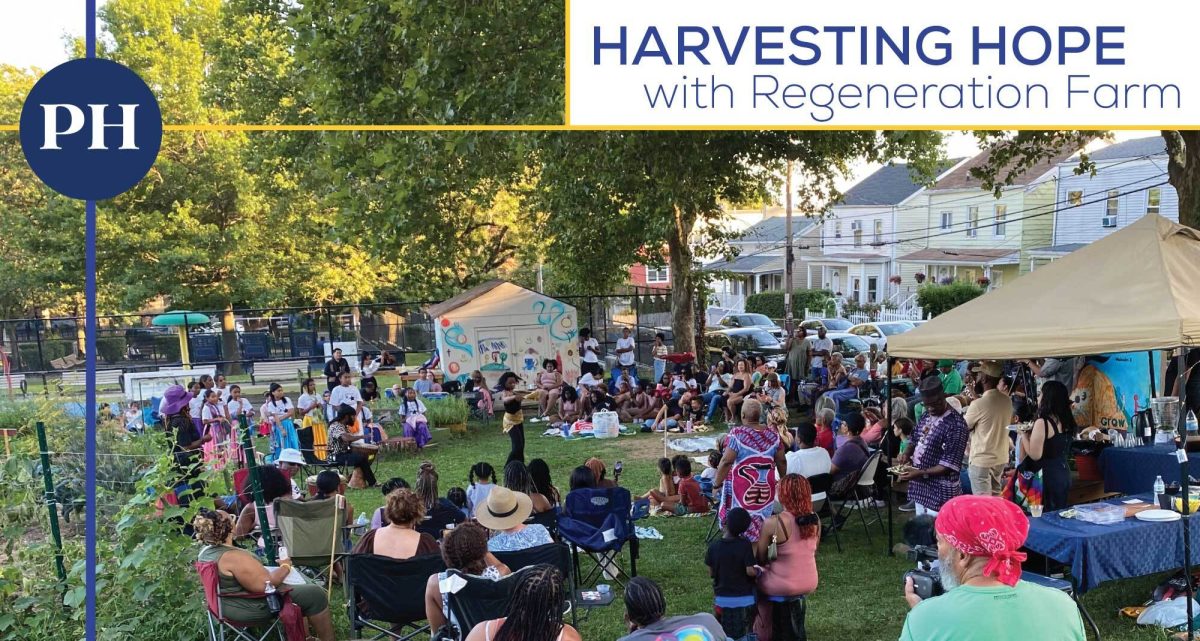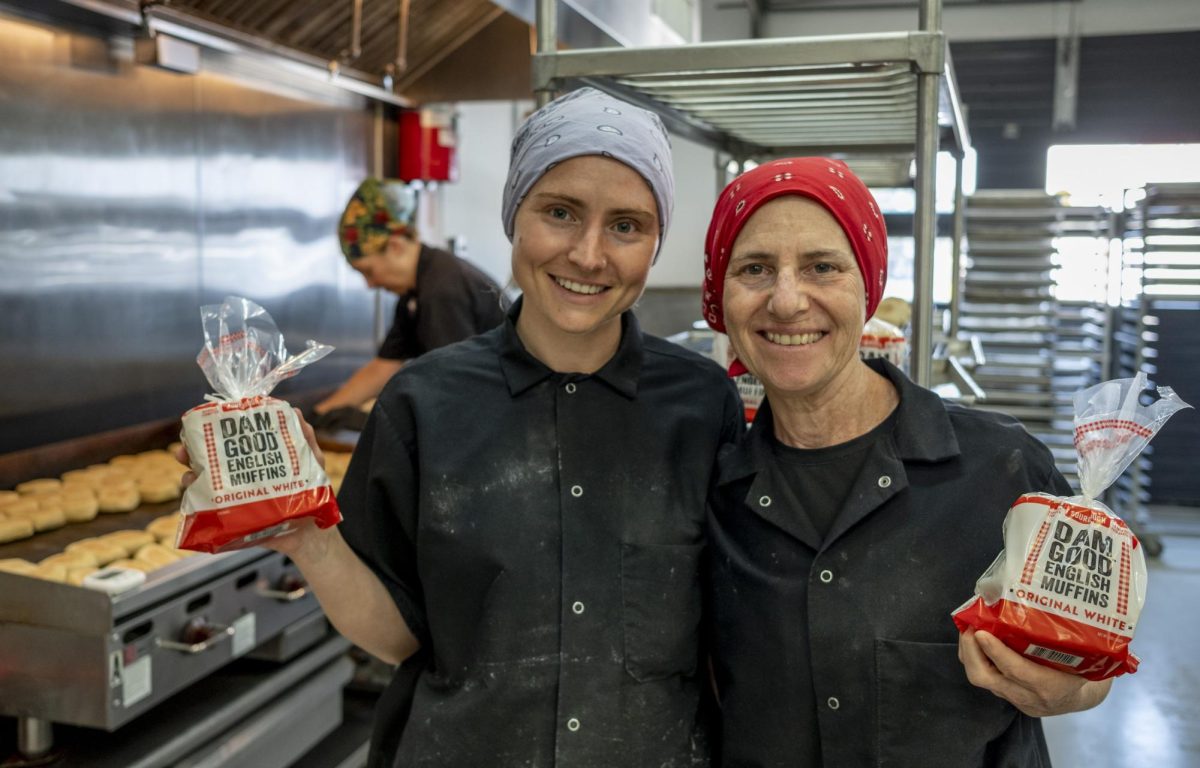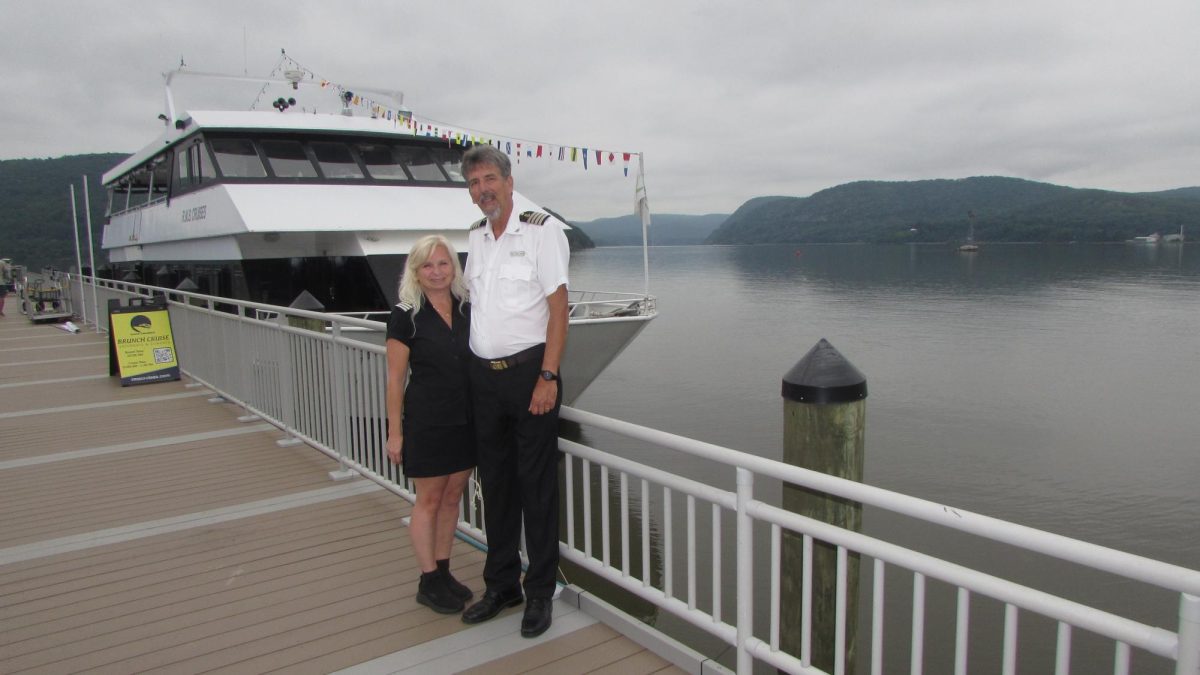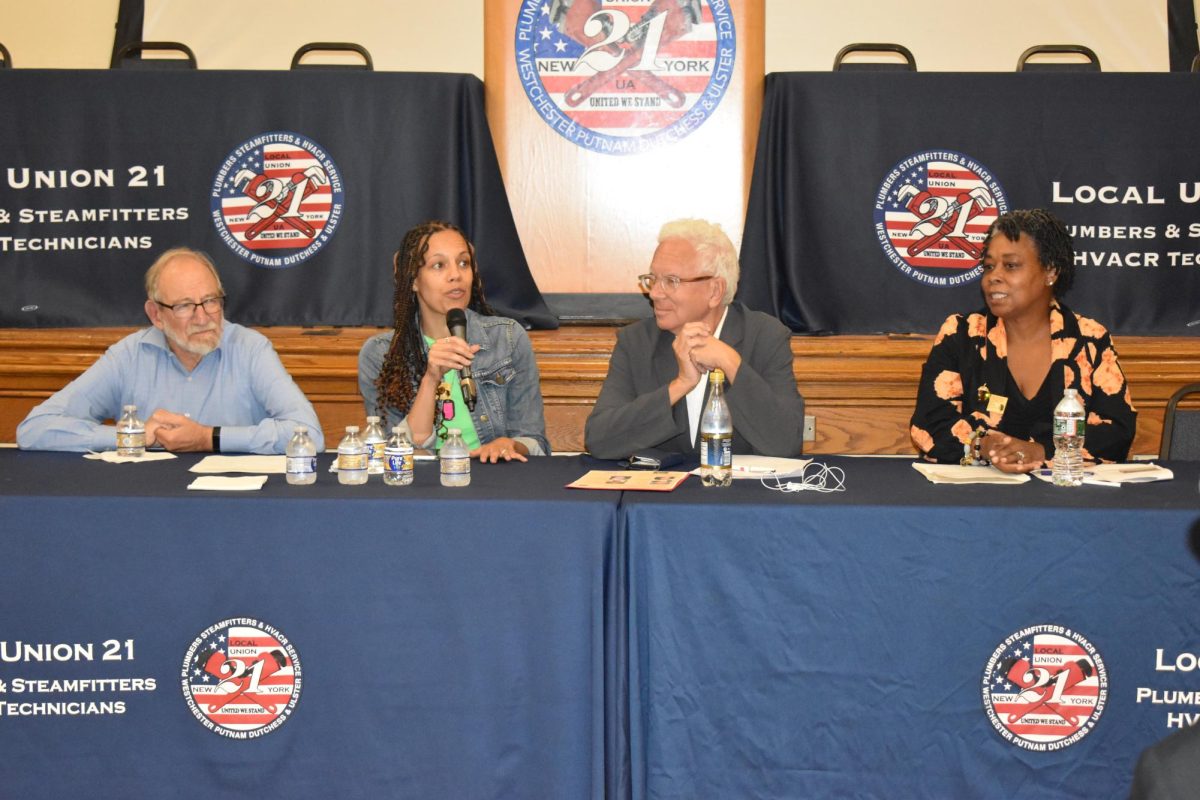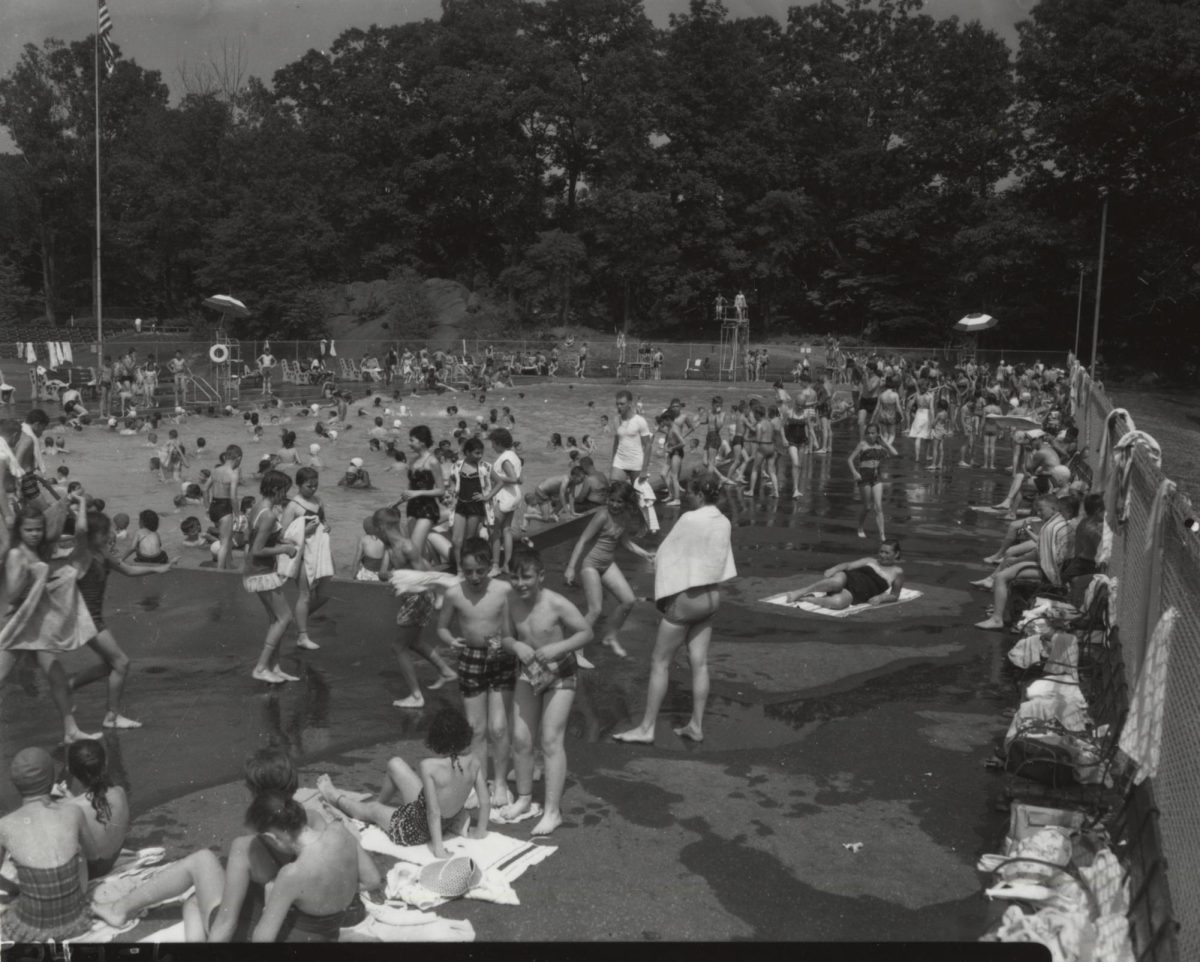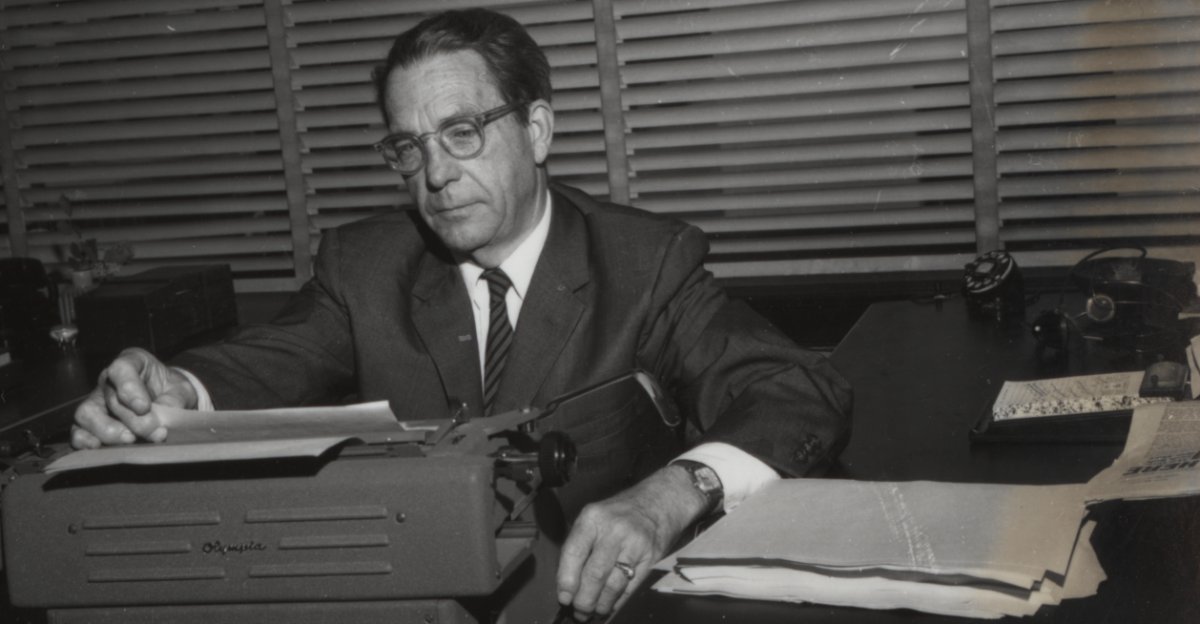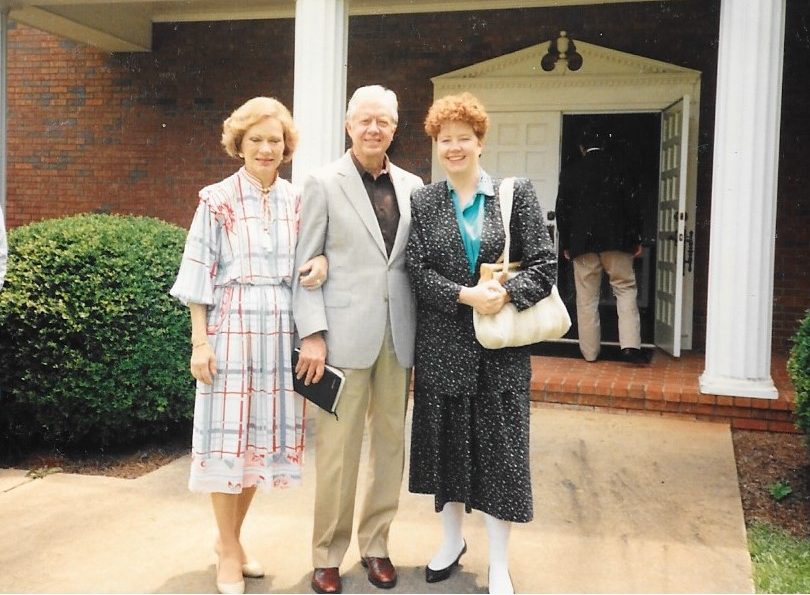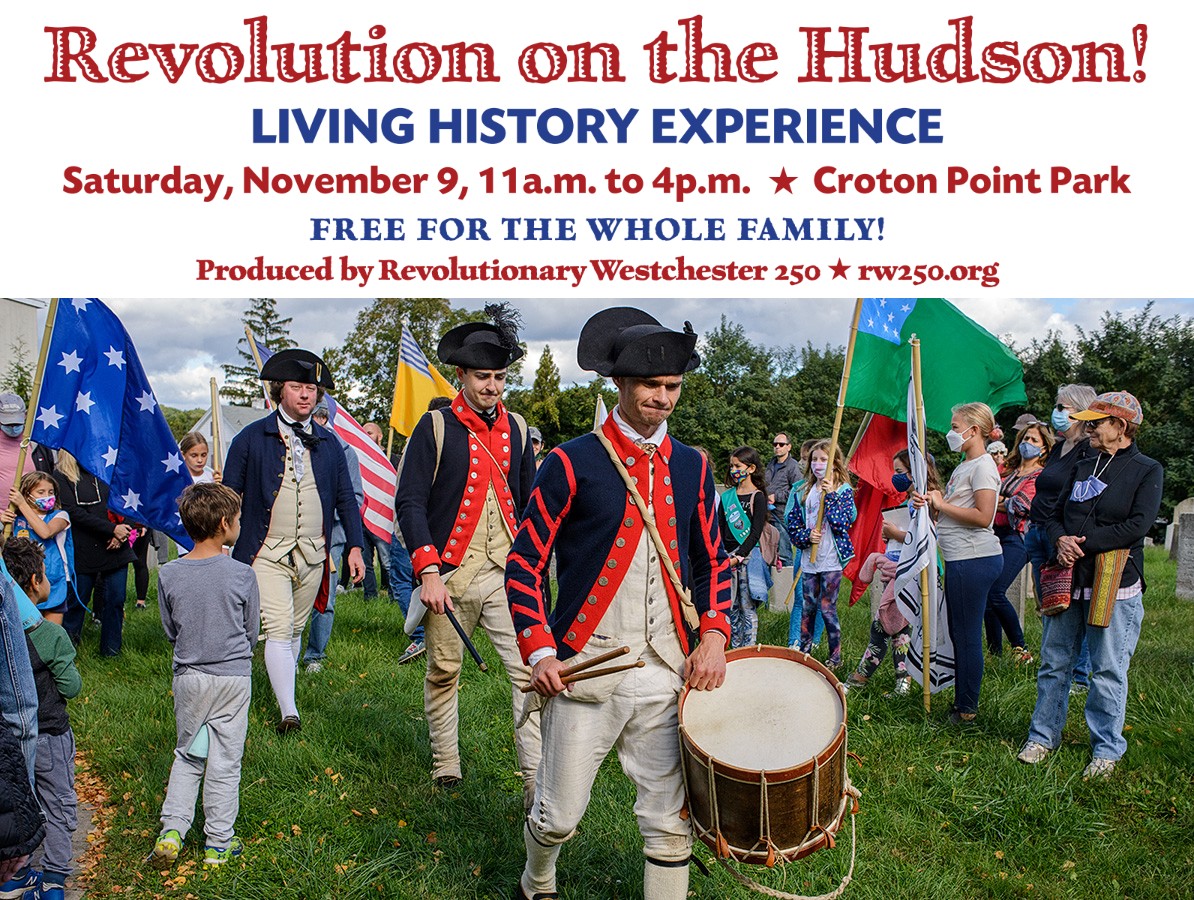The Church of the Assumption is celebrating 165 years as a parish in Peekskill and in honor of the event, the church is hosting a Festival in the parking lot of their First Street complex. The festival started yesterday, and continues through Sunday August, 18th. Carnival games, live music, raffles, a tag sale, and food from all over the world are featured. “There will be food from eight different nations including: Ecuador, India, Colombia, Dominican Republic, Mexico, Guatemala, Puerto Rico, and Italy,” said Father Esteban Sanchez, pastor of the Assumption who spoke with the Herald earlier this week. “I’m really excited for the Italian pastries and desserts.”
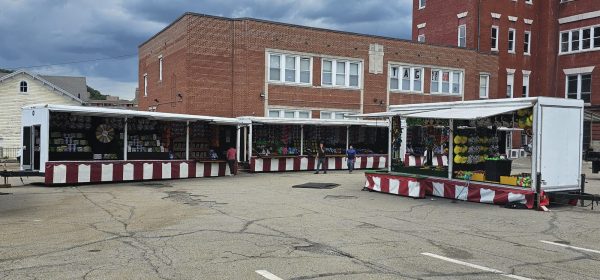
(Dave Mueller)
What did the United States look like when the Church of the Assumption was founded in 1859?
The world was a completely different place 165 years ago in 1859. The United States only consisted of 22 states. The Pony Express was not in existence yet. The first transcontinental railroad was still three years away from starting construction, and it would be another decade before the ‘Golden Spike’ would happen, completing the connection from the east coast to the west coast. The West was not settled. Westward expansion, Manifest Destiny, the tail end of the California Gold Rush, immigration from Europe, and slavery, whether it should be allowed or not in each new territory, were some of the biggest domestic issues facing the 83-year-old country. The American Civil War was a mere two years away.
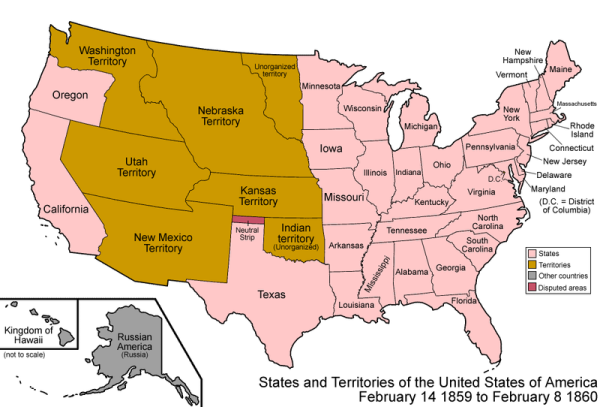
In the northern states, industry and manufacturing were spurred by new technologies that created jobs and economic prosperity. New businesses, technologies and innovations were created. This manufacturing boom fueled immigration from countries in Europe such as Ireland, England and Germany. In the south, slavery was still very much present as cotton plantations were the economic engine that created prosperity for plantation owners while keeping a large majority of the population down in inhumane perpetual servitude. It was the height of slavery in America and the country was on the precipice of a Civil War as a result of it.
How did the British Industrial Revolution shape New York & Peekskill during this time period?
For almost 100 years, from the 1800’s to the early 1900’s, the United States became the land of immigrants where people from Europe and Asia would flee their homeland for various reasons. Most notably, to create a better life for themselves and their family while working to achieve economic prosperity. They saw America as the land of economic opportunity paved with golden streets.
From 1820 to 1850, immigrants came to the United States from Northern and Western European countries. Immigrants fled from England, France, and Germany, due to overcrowded cities, unemployment or lack of land to grow crops on, as well as increases in taxes as the British Industrial Revolution was winding down. Most of these immigrants belonged to the Protestant faith. Immigrants fled Ireland en masse as the Great Irish Potato Famine decimated the country’s main crop and millions perished from starvation. Immigrants from Europe would flee en masse on ships, arrive in New York’s harbors and spread out from there.
Peekskill: A brief History
Henry Hudson “discovered” the Hudson River in 1609 and arrived in Peekskill in September of that year. Jan Peeck became the first European recorded to set foot in the area around 1640 and subsequently created a trading post with the local Native Americans.
In 1816, Peekskill became a village with approximately 250 people residing here. Peekskill’s unique location on the Hudson River and large shoreline helped aid the quick transportation of goods by ship. Numerous factories and mills were built along McGregor Brook and Annsville Creek using water power to help run the factories mills.
By 1830, Peekskill had become an industrial village with 1,131 people residing in it. Over the next few decades, Peekskill would go on to be a thriving manufacturing center producing everything from plows to stoves, to hats and underwear. Its population would grow exponentially from the 1850’s to 1900’s as a result, and it would grow from being a Village to becoming a fully incorporated City within the State of New York in 1940.
During the mid 1800’s, Peekskill became famous nationwide for manufacturing plows and stoves. That’s the reason the plow and stove are on the city’s seal. The Peekskill Iron Company was built in 1853 on the shores of the Annsville Creek to supply Peekskill’s many plow and stove foundries. At its height, eight factories produced over 200,000 stoves a year. The Peekskill Iron Company was so large that it even had its own narrow gauge railroad running all the way out to the Croft mines in Putnam County inside of what is now known as Fahnestock State Park.
During this time of expansion, a variety of companies including Union Stove Works, Fleishmann’s and the Peekskill Chemical Company, which would one day become Binney & Smith, creator of Crayola products could be found here. Just outside of Peekskill in Verplank, the Brickyards at Verplanck’s Point began to operate in 1843. At the height of the industry, the brickyard employed 425 workers and produced over 400,000 bricks daily. On the shores of the Hudson River in Peekskill, Dain’s Lumber, which is still in existence today, was founded in 1848. In the center of the Village, a wagon repair and blacksmith shop opened up in what is now the Beanrunner Cafe. By 1849, the Railroad made it to Peekskill and in the same year, the Village was incorporated within the Town of Cortlandt.
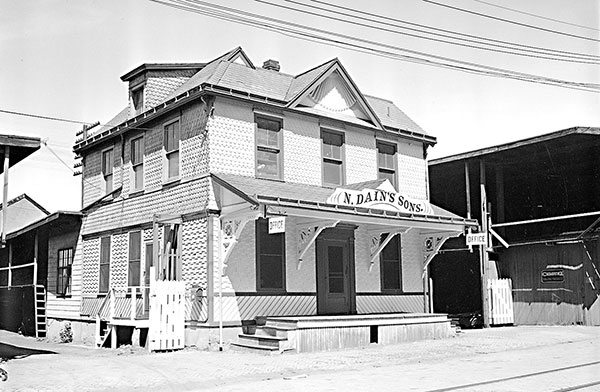
By the time President-elect Abraham Lincoln visited the Village on February 19, 1861, the population had tripled from 1,131 in 1830 to 3,560 residents. When Lincoln made a quick rail-stop in Peekskill, the only one in Westchester, at the invitation of his old friend and colleague in the US House of Representative, William Nelson, nearly half of the Village, over 1500 people, were reported to have attended.
Over the next 50 years Peekskill had a population explosion becoming the fastest growing area in Westchester County. Peekskill’s manufacturing and industrial age continued to grow exponentially. From 1895 to 1912, the Peekskill Hat Manufacturing Company, locally known now as the Hat Factory, grew from 200 to 500 workers. In 1900, the Fleischmann’s Factory was built employing more than 1,000 workers in a complex that spanned 125 buildings. Enormous cargo ships would dock at Fleischmann’s Pier bringing raw goods from all over the world to the factory. The Factory was so large that it engulfed all of what is now Charles Point Park, WIN Waste Management, and all of what is now John Walsh Boulevard. The only building left from this era is where the Factoria is presently located at Charles Point Marina. The Peekskill population and manufacturing boom led to over 15,245 residents calling Peekskill home by 1910. In 1940, the Village of Peekskill became incorporated as a City, becoming the City of Peekskill, and became the second to last city chartered to date in the State of New York.
Peekskill’s oldest Churches
As Peekskill’s population and manufacturing grew, so too did the places of worship. From its roots, Peekskill was predominantly a Protestant village. In 1847, the Peekskill First Baptist Church was built and rebuilt in 1871; St. Peter’s Episcopal Church was built in 1891; the First Presbyterian Church built in 1846; the Second Presbyterian Church which later became the Field Library was built in 1845; the original Church of the Assumption was built in 1866; and the First Hebrew Congregation was organized in 1896 – the Synagogue built in 1897. The African Methodist Episcopal (AME) Zion church at 1220 Park Street was built in 1852 by formerly enslaved persons. At the time of its construction, New York State had completed 25 years of abolition. According to the Peekskill History App, the AME Zion church has been identified as being part of the Underground Railroad. Local legend has it that Harriet Tubman passed through when leading people on the Underground Railroad.
The Assumption Church and Catholicism in Peekskill
The Assumption Church, nor any Catholic church in the area started on their own without a mother church. The Church of the Assumption is actually the daughter of St. Patrick’s Church in Verplanck.
Prior to 1842, various missionary priests from time to time attended to Catholics in the area in Verplanck. The flock and the area the priests had to tend to were scattered here and there in vast areas stretching from the lower Hudson River Valley region down to the Delaware River in Pennsylvania and all the way to the Connecticut state line.
In 1842, John Henry donated a piece of property on the corner of Highland Avenue and Eleventh Street in Verplanck in the amount of $1.00 on condition that a place of worship for Roman Catholics be built. The site donated was near the banks of the Hudson River in a specific spot so to be mindful of those who lived on the opposite bank of the river who in the summertime rowed over in small boats and in the winter walked over on the ice. (1)
Though it is unknown who originally started building the church, it is known to have started in 1842 and was completed in 1844. Since Rev. Felix Vilanis was the first permanent pastor, credit has been given to him as the one who first built the church. St. Patrick’s Catholic Church of Verplanck is still in existence today at the same location on 240 Eleventh Street. It is the oldest Catholic parish in Westchester County. Tragically, the original building burned in 1980. Only the original altar, tabernacle, some furniture and statues were saved and are used in the church which was rebuilt in 1982.
It was not long after St. Patrick’s was originally built, that the rapid growth of the brick, stove, plow and manufacturing industries brought many new residents to Peekskill in the mid-nineteenth century. Chief among these were Irish Catholic immigrants who fled Ireland to escape the Great Famine. Lacking a place to worship in the largely Protestant Peekskill, these immigrants founded the Assumption Parish in 1859.
Initially, a rented room was used for Mass while funds were raised to build a church according to the Peekskill History app. As W.J. Kelleher writes in the book History of Verplanck N.Y. “It was through the efforts of Rev. P.S. Madden, while pastor at Verplanck, founded the Church of the Assumption at Peekskill and the parishioners at Verplanck contributed two hundred dollars for that purpose.” He continued, ”John Carey of Verplanck, donated bricks of a sufficient number to build the Church of the Assumption. In fact, it might be added that with much credit to the brick manufacturers of Verplanck that there are few churches along the Hudson that have not been recipients of donations of brick for the construction of their edifices. Interestingly, Mr. Carey also donated over two hundred thousand bricks to St. Patrick’s Cathedral in New York City” whose cornerstone was laid in 1858, one year before the Assumption Parish began.
The original Church of the Assumption in Peekskill was completed in 1864. For over 50 years parishioners entered the doors at 131 Union Avenue where they celebrated Mass every Sunday. The building still exists today, but has now been converted into the rectory, the residence for priests.
The Church of the Assumption reflects many of the city’s major demographic changes over the parish’s 165 years. As the demographics have changed, so too has its parishioners. Originally, as many immigrants from North and Western Europe emigrated to the United States specifically from Ireland and Germany, many of the first parishioners were Irish and German. After the United States Civil War, a new wave of immigration to the United States began from Europe, specifically from Italy. Quickly, the Assumption welcomed Italian immigrants into their parish..
Catholic animus reached its peak in 1850 when some Protestant leaders became alarmed by the influx of Catholic immigrants. This animus continued for decades into the 19th century. Being Catholic was frowned upon not only in the nation, but right here in Westchester, the surrounding communities and right here in Peekskill. As the Assumption congregation grew, parishioners sought a larger space to worship, gather and hold social events in a safe place. They did not have to look far. The Guardian Building across the street from their Church was built in 1904-1905 as an Opera House. For various reasons, the Opera House could not sustain operations, and the Church of the Assumption took over the building in 1913.
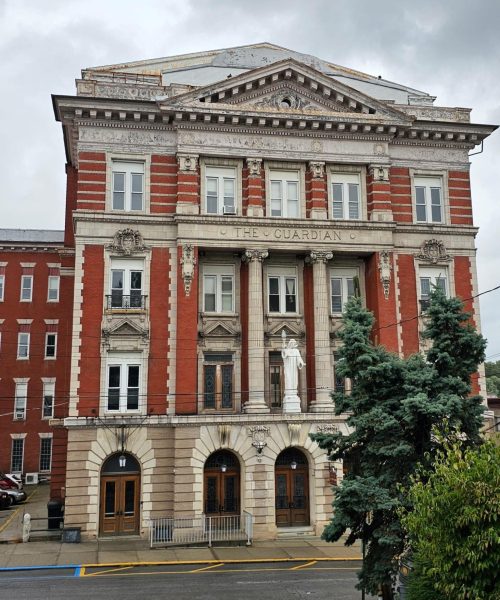
The Guardian building consists of five floors and a basement. To protect its parishioners from anti-Catholic sentiments in the Village and surrounding communities, the Church built a movie theater, a bowling alley and a rooftop garden for parishioners to gather and socialize in. They opened a parochial school in the building in which two other floors were converted into classrooms so children could be taught by nuns. The Assumption School also began in 1913. The Assumption School population increased dramatically over the decades and in due time the Church built an annex to house more students. At its peak, the school attendance was approximately 900 students. The school also housed a gymnasium, a cafeteria and an auditorium. After 100 years, the Assumption School closed its doors in 2013. Today, some 800 children attend the religious education program for weekly sessions in the classrooms.
Over the decades, as the population of the nation, state and city have changed, people have migrated and immigrated into and out of Peekskill. In addition, the surrounding municipalities have grown in population and size as well. Peekskill and the Town of Cortlandt have grown significantly over the past 165 years. As a result of population changes and the Catholic church reorganizing over the years, the Assumption became the mother church for two churches of their own: Saint Columbanus and Church of the Holy Spirit. St. Columbanus on Oregon Road in Cortlandt was founded in 1950. The Church of the Holy Spirit on Crompond Road in Cortlandt was founded in 1966. In 2020, Peekskill had over 25,431 residents in 4 square miles. The Town of Cortlandt in 2020 has a population of 42,545 in over 40 square miles
The Assumption today and in the future
The Assumption has been the home of people from all over the world over the course of history. As more Churches have opened, the surrounding communities and the City’s demographics have changed and parishioners have more options to choose a house of worship. “Peekskill is a small cosmopolitan city with people of all nationalities. The Church has people from all over the world. We have Hispanics from South America, Indians from the Goa province, Ghanese, Filipinos, Italians and more,” said Fr. Esteban Sanchez.
The Guardian Building that houses the Church of the Assumption is over 120 years old. The building requires constant maintenance, but the congregation keeps the building running. Over the course of the past few years, under the leadership of Fr. Esteban, the parishioners have refurbished and rehabilitated the entire inside of the building. “We have cleaned, fixed, removed, placed new and brought back original pieces to compliment the history of the Church” explained Fr. Esteban.
In addition, they’ve replaced the library below the Rectory with an Adoration Chapel. The next project the Assumption Church is undertaking will take place outside of the Church. “Reconstruction and reconfiguration of the parking lot are in the works where we will add Stations of the Cross, small garden planters and easier access to entrance and exits” said Fr. Esteban. “We are also working on repainting the white at the top of the building and reopening the top floor after rehabilitating it so the public can once again access it” for the first time since it was closed in the 1990’s. While many of the facility improvements have occurred under Fr. Esteban’s tenure during the last seven years, he credits “the people as the main heroes.”
Since its founding 165 years ago, The Assumption continues to give back to the community throughout the year. Three years ago, the Assumption opened up their Food Pantry which operates every Friday, from 2 – 4 pm. The doors to Adoration Chapel are open from 6 am to 9 pm everyday and the Church of the Assumption is open everyday from 6 am to 8 pm. Everyday there are two masses: one in English and one in Spanish. On the weekends there are eight masses: four in English and four in Spanish. Every weekend there are over 3,000 parishioners attending masses.


